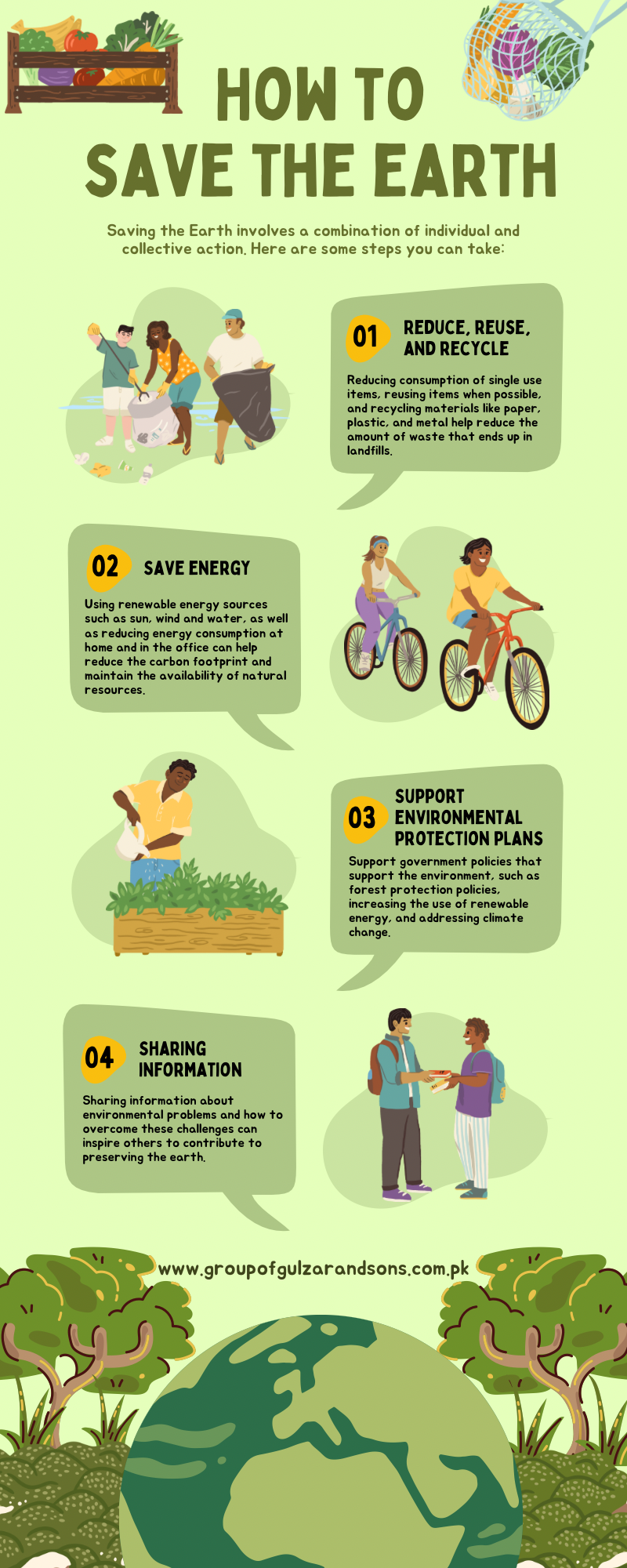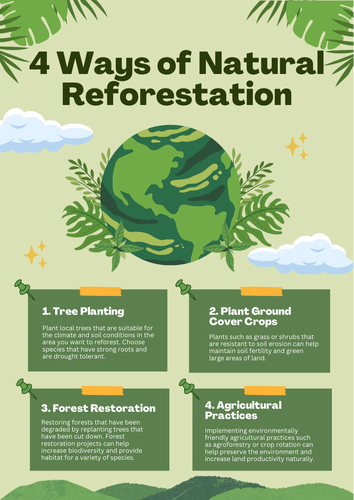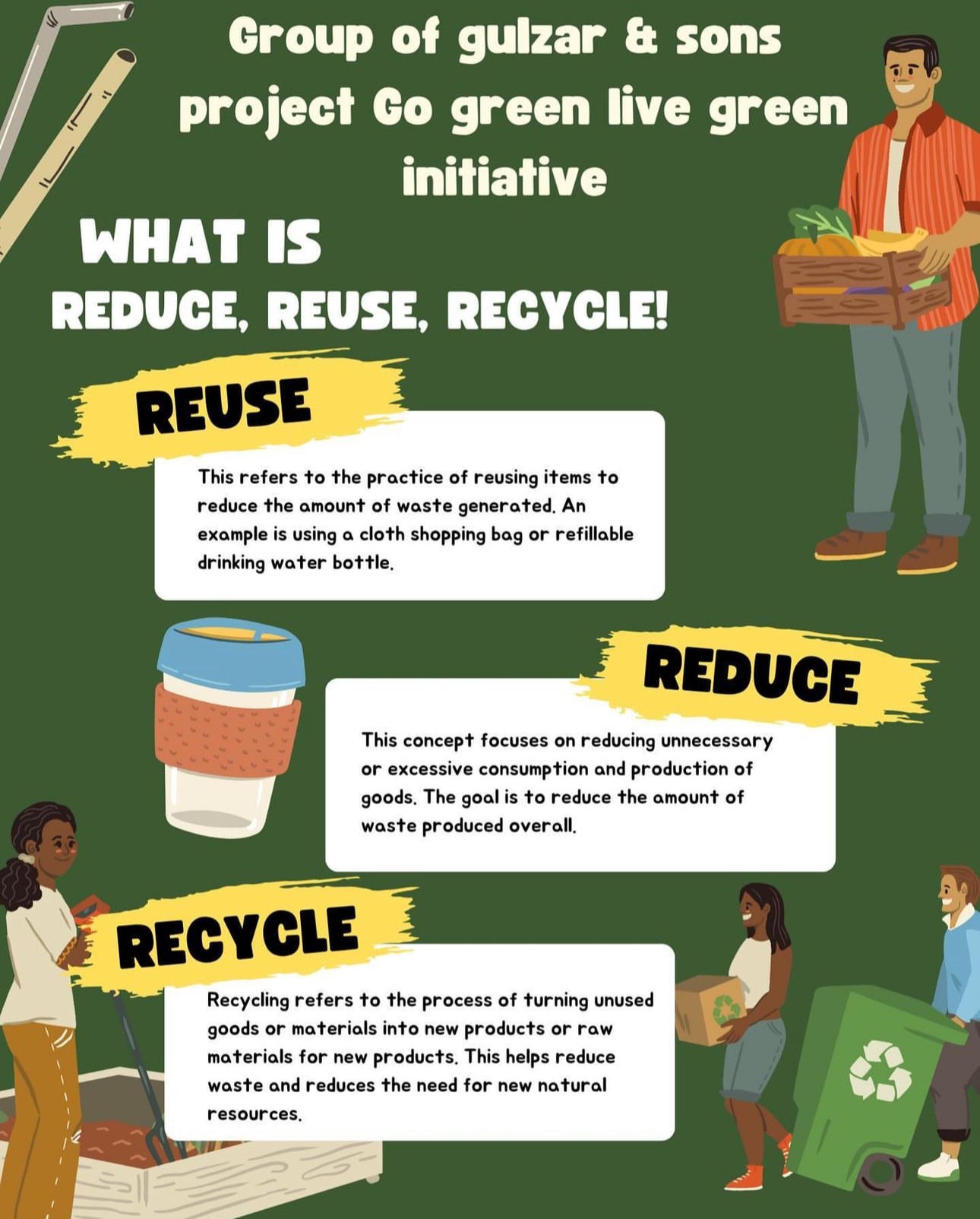Explore Group of gulzar & sons Legacy
We are glad to serve you. Feel free to ask any thing. support@groupofgulzarandsons.com.pk Regards E-commerce Department (GGS)
All products(GGS) Deals in Fertilizers, Seeds, Chemicals & many more..
We are glad to serve you. Feel free to ask any thing. support@groupofgulzarandsons.com.pk Regards E-commerce Department (GGS)
All productsPlease Select The Collection
Please Select The Collection
Please Select The Collection
Please Select The Collection
Please Select The Collection
Please Select The Collection
Business Partners
Business Partners of Group of gulzar & sons
Group of gulzar & sons works with reliable business partners all around the world.
read more
Shop our wide selection
Rs.11,000.00 PKR
Rs.12,500.00 PKR
Translation missing: en.wbcustomlabel.wballtext.quicksuccessmsg
Rs.9,000.00 PKR
Rs.9,500.00 PKR
Translation missing: en.wbcustomlabel.wballtext.quicksuccessmsg
Rs.10,715.00 PKR
Rs.11,000.00 PKR
Translation missing: en.wbcustomlabel.wballtext.quicksuccessmsg
Rs.10,500.00 PKR
Rs.10,714.00 PKR
Translation missing: en.wbcustomlabel.wballtext.quicksuccessmsg
Rs.9,000.00 PKR
Rs.9,100.00 PKR
Translation missing: en.wbcustomlabel.wballtext.quicksuccessmsg
Rs.3,850.00 PKR
Rs.4,200.00 PKR
Translation missing: en.wbcustomlabel.wballtext.quicksuccessmsg
Rs.5,500.00 PKR
Rs.5,600.00 PKR
Translation missing: en.wbcustomlabel.wballtext.quicksuccessmsg
Rs.14,700.00 PKR
Rs.14,500.00 PKR
Translation missing: en.wbcustomlabel.wballtext.quicksuccessmsg
Rs.3,850.00 PKR
Rs.4,200.00 PKR
Translation missing: en.wbcustomlabel.wballtext.quicksuccessmsg
Rs.3,850.00 PKR
Rs.4,200.00 PKR
Translation missing: en.wbcustomlabel.wballtext.quicksuccessmsg
Rs.12,000.00 PKR
Rs.12,400.00 PKR
Translation missing: en.wbcustomlabel.wballtext.quicksuccessmsg
Rs.4,350.00 PKR
Rs.4,500.00 PKR
Translation missing: en.wbcustomlabel.wballtext.quicksuccessmsg
Rs.3,900.00 PKR
Rs.4,200.00 PKR
Translation missing: en.wbcustomlabel.wballtext.quicksuccessmsg
Rs.3,000.00 PKR
Rs.3,500.00 PKR
Translation missing: en.wbcustomlabel.wballtext.quicksuccessmsg
Rs.14,900.00 PKR
Rs.14,500.00 PKR
Translation missing: en.wbcustomlabel.wballtext.quicksuccessmsg
Rs.12,000.00 PKR
Rs.12,200.00 PKR
Translation missing: en.wbcustomlabel.wballtext.quicksuccessmsg
Rs.4,500.00 PKR
Rs.4,600.00 PKR
Translation missing: en.wbcustomlabel.wballtext.quicksuccessmsg
Rs.4,400.00 PKR
Rs.4,500.00 PKR
Translation missing: en.wbcustomlabel.wballtext.quicksuccessmsg
Rs.4,500.00 PKR
Rs.4,600.00 PKR
Translation missing: en.wbcustomlabel.wballtext.quicksuccessmsg
Rs.2,600.00 PKR
Rs.2,800.00 PKR
Translation missing: en.wbcustomlabel.wballtext.quicksuccessmsg
Rs.2,400.00 PKR
Rs.2,600.00 PKR
Translation missing: en.wbcustomlabel.wballtext.quicksuccessmsg
Rs.9,000.00 PKR
Rs.9,500.00 PKR
Translation missing: en.wbcustomlabel.wballtext.quicksuccessmsg
Rs.13,800.00 PKR
Rs.14,500.00 PKR
Translation missing: en.wbcustomlabel.wballtext.quicksuccessmsg
Rs.14,000.00 PKR
Rs.14,200.00 PKR
Translation missing: en.wbcustomlabel.wballtext.quicksuccessmsg
Rs.4,400.00 PKR
Rs.4,600.00 PKR
Translation missing: en.wbcustomlabel.wballtext.quicksuccessmsg
Rs.4,400.00 PKR
Rs.4,600.00 PKR
Translation missing: en.wbcustomlabel.wballtext.quicksuccessmsg
Rs.5,400.00 PKR
Rs.5,600.00 PKR
Translation missing: en.wbcustomlabel.wballtext.quicksuccessmsg
Rs.4,050.00 PKR
Rs.4,200.00 PKR
Translation missing: en.wbcustomlabel.wballtext.quicksuccessmsg
Rs.9,400.00 PKR
Rs.9,300.00 PKR
Translation missing: en.wbcustomlabel.wballtext.quicksuccessmsg
Rs.1,500.00 PKR
Rs.1,600.00 PKR
Translation missing: en.wbcustomlabel.wballtext.quicksuccessmsg
GILD SEED CORP...
GILD HYBRID CORN
Rs.2,700.00 PKR
Rs.3,500.00 PKR
Translation missing: en.wbcustomlabel.wballtext.quicksuccessmsg
Rs.11,000.00 PKR
Rs.15,000.00 PKR
Translation missing: en.wbcustomlabel.wballtext.quicksuccessmsg
Rs.8,500.00 PKR
Rs.9,000.00 PKR
Translation missing: en.wbcustomlabel.wballtext.quicksuccessmsg
Rs.1,200.00 PKR
Rs.1,400.00 PKR
Translation missing: en.wbcustomlabel.wballtext.quicksuccessmsg
Rs.1,200.00 PKR
Rs.1,500.00 PKR
Translation missing: en.wbcustomlabel.wballtext.quicksuccessmsg
Rs.1,200.00 PKR
Rs.1,500.00 PKR
Translation missing: en.wbcustomlabel.wballtext.quicksuccessmsg
Rs.1,800.00 PKR
Rs.1,900.00 PKR
Translation missing: en.wbcustomlabel.wballtext.quicksuccessmsg
Rs.1,800.00 PKR
Rs.2,000.00 PKR
Translation missing: en.wbcustomlabel.wballtext.quicksuccessmsg
Rs.10,500.00 PKR
Rs.18,000.00 PKR
Translation missing: en.wbcustomlabel.wballtext.quicksuccessmsg
Rs.100.00 PKR
Rs.150.00 PKR
Translation missing: en.wbcustomlabel.wballtext.quicksuccessmsg
Rs.1,500.00 PKR
Rs.2,000.00 PKR
Translation missing: en.wbcustomlabel.wballtext.quicksuccessmsg
Rs.1,500.00 PKR
Rs.2,000.00 PKR
Translation missing: en.wbcustomlabel.wballtext.quicksuccessmsg
Rs.17,500.00 PKR
Rs.18,000.00 PKR
Translation missing: en.wbcustomlabel.wballtext.quicksuccessmsg
Rs.15,000.00 PKR
Rs.16,500.00 PKR
Translation missing: en.wbcustomlabel.wballtext.quicksuccessmsg
Rs.3,500.00 PKR
Rs.4,500.00 PKR
Translation missing: en.wbcustomlabel.wballtext.quicksuccessmsg
Rs.1,000.00 PKR
Rs.1,800.00 PKR
Translation missing: en.wbcustomlabel.wballtext.quicksuccessmsg
Rs.1,500.00 PKR
Rs.2,000.00 PKR
Translation missing: en.wbcustomlabel.wballtext.quicksuccessmsg
Rs.1,300.00 PKR
Rs.1,800.00 PKR
Translation missing: en.wbcustomlabel.wballtext.quicksuccessmsg
Rs.11,900.00 PKR
Rs.12,500.00 PKR
Translation missing: en.wbcustomlabel.wballtext.quicksuccessmsg
Rs.2,500.00 PKR
Rs.3,500.00 PKR
Translation missing: en.wbcustomlabel.wballtext.quicksuccessmsg
Rs.4,000.00 PKR
Rs.4,500.00 PKR
Translation missing: en.wbcustomlabel.wballtext.quicksuccessmsg
Rs.20,000.00 PKR
Rs.22,000.00 PKR
Translation missing: en.wbcustomlabel.wballtext.quicksuccessmsg
Rs.17,000.00 PKR
Rs.18,500.00 PKR
Translation missing: en.wbcustomlabel.wballtext.quicksuccessmsg
Rs.4,000.00 PKR
Rs.4,800.00 PKR
Translation missing: en.wbcustomlabel.wballtext.quicksuccessmsg
Rs.4,000.00 PKR
Rs.4,800.00 PKR
Translation missing: en.wbcustomlabel.wballtext.quicksuccessmsg
Rs.3,000.00 PKR
Rs.3,500.00 PKR
Translation missing: en.wbcustomlabel.wballtext.quicksuccessmsg
Rs.18,000.00 PKR
Rs.19,000.00 PKR
Translation missing: en.wbcustomlabel.wballtext.quicksuccessmsg
Rs.18,000.00 PKR
Rs.19,000.00 PKR
Translation missing: en.wbcustomlabel.wballtext.quicksuccessmsg
Rs.10,000.00 PKR
Rs.11,880.00 PKR
Translation missing: en.wbcustomlabel.wballtext.quicksuccessmsg
Rs.18,000.00 PKR
Rs.19,000.00 PKR
Translation missing: en.wbcustomlabel.wballtext.quicksuccessmsg
Rs.1,800.00 PKR
Rs.2,000.00 PKR
Translation missing: en.wbcustomlabel.wballtext.quicksuccessmsg
Rs.1,800.00 PKR
Rs.2,000.00 PKR
Translation missing: en.wbcustomlabel.wballtext.quicksuccessmsg
Rs.600.00 PKR
Rs.900.00 PKR
Translation missing: en.wbcustomlabel.wballtext.quicksuccessmsg
Rs.1,000.00 PKR
Rs.1,500.00 PKR
Translation missing: en.wbcustomlabel.wballtext.quicksuccessmsg
Rs.400.00 PKR
Rs.699.00 PKR
Translation missing: en.wbcustomlabel.wballtext.quicksuccessmsg
BALSAM AGRO CHEMICALS
ANCIENT
Rs.600.00 PKR
Rs.800.00 PKR
Translation missing: en.wbcustomlabel.wballtext.quicksuccessmsg
Rs.1,500.00 PKR
Rs.1,800.00 PKR
Translation missing: en.wbcustomlabel.wballtext.quicksuccessmsg
Rs.1,800.00 PKR
Rs.2,500.00 PKR
Translation missing: en.wbcustomlabel.wballtext.quicksuccessmsg
Rs.1,800.00 PKR
Rs.2,500.00 PKR
Translation missing: en.wbcustomlabel.wballtext.quicksuccessmsg
Rs.1,800.00 PKR
Rs.2,500.00 PKR
Translation missing: en.wbcustomlabel.wballtext.quicksuccessmsg
Rs.500.00 PKR
Rs.600.00 PKR
Translation missing: en.wbcustomlabel.wballtext.quicksuccessmsg
Rs.1,800.00 PKR
Rs.2,500.00 PKR
Translation missing: en.wbcustomlabel.wballtext.quicksuccessmsg
Rs.1,800.00 PKR
Rs.2,200.00 PKR
Translation missing: en.wbcustomlabel.wballtext.quicksuccessmsg
Rs.500.00 PKR
Rs.600.00 PKR
Translation missing: en.wbcustomlabel.wballtext.quicksuccessmsg
Rs.600.00 PKR
Rs.800.00 PKR
Translation missing: en.wbcustomlabel.wballtext.quicksuccessmsg
Rs.1,600.00 PKR
Rs.1,800.00 PKR
Translation missing: en.wbcustomlabel.wballtext.quicksuccessmsg
Rs.1,600.00 PKR
Rs.1,800.00 PKR
Translation missing: en.wbcustomlabel.wballtext.quicksuccessmsg
Rs.800.00 PKR
Rs.1,000.00 PKR
Translation missing: en.wbcustomlabel.wballtext.quicksuccessmsg
Rs.800.00 PKR
Rs.1,000.00 PKR
Translation missing: en.wbcustomlabel.wballtext.quicksuccessmsg
Rs.300.00 PKR
Rs.500.00 PKR
Translation missing: en.wbcustomlabel.wballtext.quicksuccessmsg
Rs.1,200.00 PKR
Rs.1,500.00 PKR
Translation missing: en.wbcustomlabel.wballtext.quicksuccessmsg
Rs.1,800.00 PKR
Rs.2,200.00 PKR
Translation missing: en.wbcustomlabel.wballtext.quicksuccessmsg
Rs.1,000.00 PKR
Rs.1,200.00 PKR
Translation missing: en.wbcustomlabel.wballtext.quicksuccessmsg
Rs.2,000.00 PKR
Rs.2,200.00 PKR
Translation missing: en.wbcustomlabel.wballtext.quicksuccessmsg
Rs.500.00 PKR
Rs.700.00 PKR
Translation missing: en.wbcustomlabel.wballtext.quicksuccessmsg
Rs.1,200.00 PKR
Rs.1,600.00 PKR
Translation missing: en.wbcustomlabel.wballtext.quicksuccessmsg
Rs.1,500.00 PKR
Rs.1,600.00 PKR
Translation missing: en.wbcustomlabel.wballtext.quicksuccessmsg
Rs.1,000.00 PKR
Rs.1,200.00 PKR
Translation missing: en.wbcustomlabel.wballtext.quicksuccessmsg
Rs.1,500.00 PKR
Rs.2,000.00 PKR
Translation missing: en.wbcustomlabel.wballtext.quicksuccessmsg
Rs.1,200.00 PKR
Rs.1,500.00 PKR
Translation missing: en.wbcustomlabel.wballtext.quicksuccessmsg
Rs.1,000.00 PKR
Rs.1,200.00 PKR
Translation missing: en.wbcustomlabel.wballtext.quicksuccessmsg
Rs.1,400.00 PKR
Rs.1,800.00 PKR
Translation missing: en.wbcustomlabel.wballtext.quicksuccessmsg
Rs.1,200.00 PKR
Rs.1,800.00 PKR
Translation missing: en.wbcustomlabel.wballtext.quicksuccessmsg
Rs.700.00 PKR
Rs.1,200.00 PKR
Translation missing: en.wbcustomlabel.wballtext.quicksuccessmsg
Rs.1,800.00 PKR
Rs.2,000.00 PKR
Translation missing: en.wbcustomlabel.wballtext.quicksuccessmsg
Rs.1,500.00 PKR
Rs.1,800.00 PKR
Translation missing: en.wbcustomlabel.wballtext.quicksuccessmsg
Rs.1,200.00 PKR
Rs.1,400.00 PKR
Translation missing: en.wbcustomlabel.wballtext.quicksuccessmsg
Rs.900.00 PKR
Rs.1,200.00 PKR
Translation missing: en.wbcustomlabel.wballtext.quicksuccessmsg
Rs.10,000.00 PKR
Rs.11,000.00 PKR
Translation missing: en.wbcustomlabel.wballtext.quicksuccessmsg
Rs.3,500.00 PKR
Rs.4,000.00 PKR
Translation missing: en.wbcustomlabel.wballtext.quicksuccessmsg
Rs.11,000.00 PKR
Rs.12,000.00 PKR
Translation missing: en.wbcustomlabel.wballtext.quicksuccessmsg
Rs.8,500.00 PKR
Rs.9,000.00 PKR
Translation missing: en.wbcustomlabel.wballtext.quicksuccessmsg
Rs.600.00 PKR
Rs.800.00 PKR
Translation missing: en.wbcustomlabel.wballtext.quicksuccessmsg
Rs.1,200.00 PKR
Rs.1,400.00 PKR
Translation missing: en.wbcustomlabel.wballtext.quicksuccessmsg
Rs.1,800.00 PKR
Rs.2,000.00 PKR
Translation missing: en.wbcustomlabel.wballtext.quicksuccessmsg
Rs.100.00 PKR
Rs.150.00 PKR
Translation missing: en.wbcustomlabel.wballtext.quicksuccessmsg
Rs.1,500.00 PKR
Rs.2,000.00 PKR
Translation missing: en.wbcustomlabel.wballtext.quicksuccessmsg
Rs.1,500.00 PKR
Rs.2,000.00 PKR
Translation missing: en.wbcustomlabel.wballtext.quicksuccessmsg
Rs.3,500.00 PKR
Rs.4,500.00 PKR
Translation missing: en.wbcustomlabel.wballtext.quicksuccessmsg
Rs.1,000.00 PKR
Rs.1,800.00 PKR
Translation missing: en.wbcustomlabel.wballtext.quicksuccessmsg
Rs.1,500.00 PKR
Rs.2,000.00 PKR
Translation missing: en.wbcustomlabel.wballtext.quicksuccessmsg
Rs.1,300.00 PKR
Rs.1,800.00 PKR
Translation missing: en.wbcustomlabel.wballtext.quicksuccessmsg
Rs.2,500.00 PKR
Rs.3,500.00 PKR
Translation missing: en.wbcustomlabel.wballtext.quicksuccessmsg
Rs.4,000.00 PKR
Rs.4,800.00 PKR
Translation missing: en.wbcustomlabel.wballtext.quicksuccessmsg
Rs.4,000.00 PKR
Rs.4,800.00 PKR
Translation missing: en.wbcustomlabel.wballtext.quicksuccessmsg
GILD SEED CORP...
GILD HYBRID CORN
Rs.2,700.00 PKR
Rs.3,500.00 PKR
Translation missing: en.wbcustomlabel.wballtext.quicksuccessmsg
Rs.1,200.00 PKR
Rs.1,500.00 PKR
Translation missing: en.wbcustomlabel.wballtext.quicksuccessmsg
Rs.1,800.00 PKR
Rs.1,900.00 PKR
Translation missing: en.wbcustomlabel.wballtext.quicksuccessmsg
Rs.3,000.00 PKR
Rs.3,500.00 PKR
Translation missing: en.wbcustomlabel.wballtext.quicksuccessmsg
Rs.1,800.00 PKR
Rs.2,000.00 PKR
Translation missing: en.wbcustomlabel.wballtext.quicksuccessmsg
Rs.1,800.00 PKR
Rs.2,000.00 PKR
Translation missing: en.wbcustomlabel.wballtext.quicksuccessmsg
Rs.600.00 PKR
Rs.900.00 PKR
Translation missing: en.wbcustomlabel.wballtext.quicksuccessmsg
Rs.1,000.00 PKR
Rs.1,500.00 PKR
Translation missing: en.wbcustomlabel.wballtext.quicksuccessmsg
Rs.400.00 PKR
Rs.699.00 PKR
Translation missing: en.wbcustomlabel.wballtext.quicksuccessmsg
BALSAM AGRO CHEMICALS
ANCIENT
Rs.600.00 PKR
Rs.800.00 PKR
Translation missing: en.wbcustomlabel.wballtext.quicksuccessmsg
Rs.1,500.00 PKR
Rs.1,800.00 PKR
Translation missing: en.wbcustomlabel.wballtext.quicksuccessmsg
Rs.1,800.00 PKR
Rs.2,500.00 PKR
Translation missing: en.wbcustomlabel.wballtext.quicksuccessmsg
Rs.1,800.00 PKR
Rs.2,500.00 PKR
Translation missing: en.wbcustomlabel.wballtext.quicksuccessmsg
Rs.1,800.00 PKR
Rs.2,500.00 PKR
Translation missing: en.wbcustomlabel.wballtext.quicksuccessmsg
Rs.500.00 PKR
Rs.600.00 PKR
Translation missing: en.wbcustomlabel.wballtext.quicksuccessmsg
Rs.1,800.00 PKR
Rs.2,500.00 PKR
Translation missing: en.wbcustomlabel.wballtext.quicksuccessmsg
Rs.1,800.00 PKR
Rs.2,200.00 PKR
Translation missing: en.wbcustomlabel.wballtext.quicksuccessmsg
Rs.500.00 PKR
Rs.600.00 PKR
Translation missing: en.wbcustomlabel.wballtext.quicksuccessmsg
Rs.600.00 PKR
Rs.800.00 PKR
Translation missing: en.wbcustomlabel.wballtext.quicksuccessmsg
Rs.1,600.00 PKR
Rs.1,800.00 PKR
Translation missing: en.wbcustomlabel.wballtext.quicksuccessmsg
Rs.1,600.00 PKR
Rs.1,800.00 PKR
Translation missing: en.wbcustomlabel.wballtext.quicksuccessmsg
Rs.800.00 PKR
Rs.1,000.00 PKR
Translation missing: en.wbcustomlabel.wballtext.quicksuccessmsg
Rs.800.00 PKR
Rs.1,000.00 PKR
Translation missing: en.wbcustomlabel.wballtext.quicksuccessmsg
Rs.300.00 PKR
Rs.500.00 PKR
Translation missing: en.wbcustomlabel.wballtext.quicksuccessmsg
Rs.1,200.00 PKR
Rs.1,500.00 PKR
Translation missing: en.wbcustomlabel.wballtext.quicksuccessmsg
Rs.1,800.00 PKR
Rs.2,200.00 PKR
Translation missing: en.wbcustomlabel.wballtext.quicksuccessmsg
Rs.1,000.00 PKR
Rs.1,200.00 PKR
Translation missing: en.wbcustomlabel.wballtext.quicksuccessmsg
Rs.2,000.00 PKR
Rs.2,200.00 PKR
Translation missing: en.wbcustomlabel.wballtext.quicksuccessmsg
Rs.500.00 PKR
Rs.700.00 PKR
Translation missing: en.wbcustomlabel.wballtext.quicksuccessmsg
Rs.1,200.00 PKR
Rs.1,600.00 PKR
Translation missing: en.wbcustomlabel.wballtext.quicksuccessmsg
Rs.1,500.00 PKR
Rs.1,600.00 PKR
Translation missing: en.wbcustomlabel.wballtext.quicksuccessmsg
Rs.1,000.00 PKR
Rs.1,200.00 PKR
Translation missing: en.wbcustomlabel.wballtext.quicksuccessmsg
Rs.1,500.00 PKR
Rs.2,000.00 PKR
Translation missing: en.wbcustomlabel.wballtext.quicksuccessmsg
Rs.1,200.00 PKR
Rs.1,500.00 PKR
Translation missing: en.wbcustomlabel.wballtext.quicksuccessmsg
Rs.1,000.00 PKR
Rs.1,200.00 PKR
Translation missing: en.wbcustomlabel.wballtext.quicksuccessmsg
Rs.9,000.00 PKR
Rs.9,500.00 PKR
Translation missing: en.wbcustomlabel.wballtext.quicksuccessmsg

Subscribe newsletter and get registered in (GGS) ERP Data base
The best way to registered in (GGS) ERP Data base by entering your E-mail and system will sync your data. Regards Group Of Gulzar & sons E-commerce Department.
(GGS)
GROUP OF GULZAR & SONS HISTORY
Sir Mian Muhammad Gulzar start up Business with500RS in 12/7/1950 With (AL HABIB) & one bag of Urea•Now we consist on Five multinational Companies!Importing products all over the world working with several countries and international businesses.GGS Working with five biggest groups of pakistan(FFC/FFBL/ENGRO/FATIMA FERT/ PAK ARAB FERTILIZER/ICI PAKISTAN LIMITED etc..
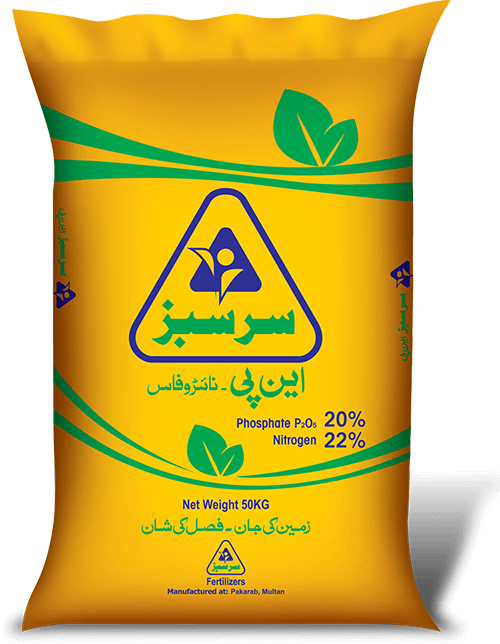
FERTILIZERS
SHOW MORE PRODUCTS
SS NP
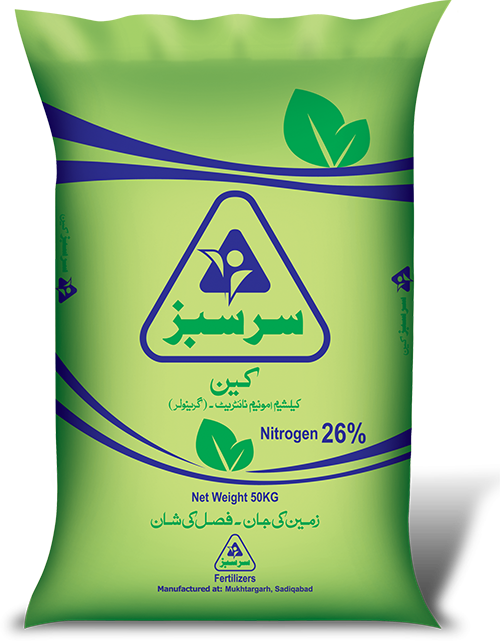
FERTILIZERS
SHOW MORE PRODUCTS
SS CAN-G
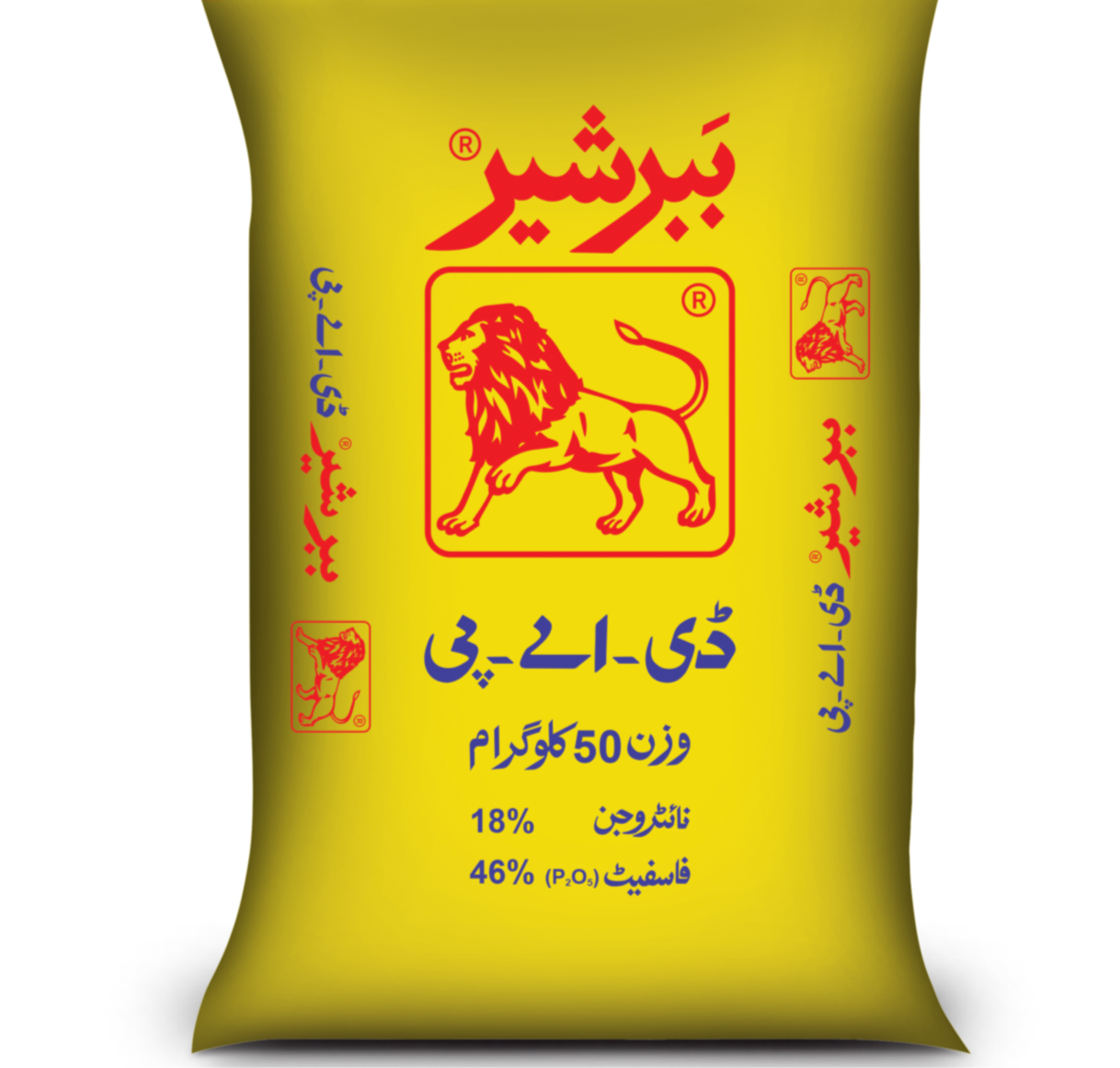
FERTILIZERS
SHOW MORE PRODUCTS
BABBAR SHAR UREA
GGS Top selling Categories
Rs.11,000.00 PKR
Rs.12,500.00 PKR
Translation missing: en.wbcustomlabel.wballtext.quicksuccessmsg
Rs.9,000.00 PKR
Rs.9,500.00 PKR
Translation missing: en.wbcustomlabel.wballtext.quicksuccessmsg
Rs.10,715.00 PKR
Rs.11,000.00 PKR
Translation missing: en.wbcustomlabel.wballtext.quicksuccessmsg
Rs.10,500.00 PKR
Rs.10,714.00 PKR
Translation missing: en.wbcustomlabel.wballtext.quicksuccessmsg
Rs.9,000.00 PKR
Rs.9,100.00 PKR
Translation missing: en.wbcustomlabel.wballtext.quicksuccessmsg
Rs.3,850.00 PKR
Rs.4,200.00 PKR
Translation missing: en.wbcustomlabel.wballtext.quicksuccessmsg
Rs.5,500.00 PKR
Rs.5,600.00 PKR
Translation missing: en.wbcustomlabel.wballtext.quicksuccessmsg
Rs.14,700.00 PKR
Rs.14,500.00 PKR
Translation missing: en.wbcustomlabel.wballtext.quicksuccessmsg
Rs.3,850.00 PKR
Rs.4,200.00 PKR
Translation missing: en.wbcustomlabel.wballtext.quicksuccessmsg
Rs.3,850.00 PKR
Rs.4,200.00 PKR
Translation missing: en.wbcustomlabel.wballtext.quicksuccessmsg
Rs.12,000.00 PKR
Rs.12,400.00 PKR
Translation missing: en.wbcustomlabel.wballtext.quicksuccessmsg
Rs.4,350.00 PKR
Rs.4,500.00 PKR
Translation missing: en.wbcustomlabel.wballtext.quicksuccessmsg
Rs.3,900.00 PKR
Rs.4,200.00 PKR
Translation missing: en.wbcustomlabel.wballtext.quicksuccessmsg
Rs.3,000.00 PKR
Rs.3,500.00 PKR
Translation missing: en.wbcustomlabel.wballtext.quicksuccessmsg
Rs.14,900.00 PKR
Rs.14,500.00 PKR
Translation missing: en.wbcustomlabel.wballtext.quicksuccessmsg
Rs.12,000.00 PKR
Rs.12,200.00 PKR
Translation missing: en.wbcustomlabel.wballtext.quicksuccessmsg
Rs.4,500.00 PKR
Rs.4,600.00 PKR
Translation missing: en.wbcustomlabel.wballtext.quicksuccessmsg
Rs.4,400.00 PKR
Rs.4,500.00 PKR
Translation missing: en.wbcustomlabel.wballtext.quicksuccessmsg
Rs.4,500.00 PKR
Rs.4,600.00 PKR
Translation missing: en.wbcustomlabel.wballtext.quicksuccessmsg
Rs.2,600.00 PKR
Rs.2,800.00 PKR
Translation missing: en.wbcustomlabel.wballtext.quicksuccessmsg
Rs.2,400.00 PKR
Rs.2,600.00 PKR
Translation missing: en.wbcustomlabel.wballtext.quicksuccessmsg
Rs.9,000.00 PKR
Rs.9,500.00 PKR
Translation missing: en.wbcustomlabel.wballtext.quicksuccessmsg
Rs.13,800.00 PKR
Rs.14,500.00 PKR
Translation missing: en.wbcustomlabel.wballtext.quicksuccessmsg
Rs.14,000.00 PKR
Rs.14,200.00 PKR
Translation missing: en.wbcustomlabel.wballtext.quicksuccessmsg
Rs.4,400.00 PKR
Rs.4,600.00 PKR
Translation missing: en.wbcustomlabel.wballtext.quicksuccessmsg
Rs.4,400.00 PKR
Rs.4,600.00 PKR
Translation missing: en.wbcustomlabel.wballtext.quicksuccessmsg
Rs.5,400.00 PKR
Rs.5,600.00 PKR
Translation missing: en.wbcustomlabel.wballtext.quicksuccessmsg
Rs.4,050.00 PKR
Rs.4,200.00 PKR
Translation missing: en.wbcustomlabel.wballtext.quicksuccessmsg
Rs.9,400.00 PKR
Rs.9,300.00 PKR
Translation missing: en.wbcustomlabel.wballtext.quicksuccessmsg
Rs.1,500.00 PKR
Rs.1,600.00 PKR
Translation missing: en.wbcustomlabel.wballtext.quicksuccessmsg
GILD SEED CORP...
GILD HYBRID CORN
Rs.2,700.00 PKR
Rs.3,500.00 PKR
Translation missing: en.wbcustomlabel.wballtext.quicksuccessmsg
Rs.11,000.00 PKR
Rs.15,000.00 PKR
Translation missing: en.wbcustomlabel.wballtext.quicksuccessmsg
Rs.8,500.00 PKR
Rs.9,000.00 PKR
Translation missing: en.wbcustomlabel.wballtext.quicksuccessmsg
Rs.1,200.00 PKR
Rs.1,400.00 PKR
Translation missing: en.wbcustomlabel.wballtext.quicksuccessmsg
Rs.1,200.00 PKR
Rs.1,500.00 PKR
Translation missing: en.wbcustomlabel.wballtext.quicksuccessmsg
Rs.1,200.00 PKR
Rs.1,500.00 PKR
Translation missing: en.wbcustomlabel.wballtext.quicksuccessmsg
Rs.1,800.00 PKR
Rs.1,900.00 PKR
Translation missing: en.wbcustomlabel.wballtext.quicksuccessmsg
Rs.1,800.00 PKR
Rs.2,000.00 PKR
Translation missing: en.wbcustomlabel.wballtext.quicksuccessmsg
Rs.10,500.00 PKR
Rs.18,000.00 PKR
Translation missing: en.wbcustomlabel.wballtext.quicksuccessmsg
Rs.100.00 PKR
Rs.150.00 PKR
Translation missing: en.wbcustomlabel.wballtext.quicksuccessmsg
Rs.1,500.00 PKR
Rs.2,000.00 PKR
Translation missing: en.wbcustomlabel.wballtext.quicksuccessmsg
Rs.1,500.00 PKR
Rs.2,000.00 PKR
Translation missing: en.wbcustomlabel.wballtext.quicksuccessmsg
Rs.17,500.00 PKR
Rs.18,000.00 PKR
Translation missing: en.wbcustomlabel.wballtext.quicksuccessmsg
Rs.15,000.00 PKR
Rs.16,500.00 PKR
Translation missing: en.wbcustomlabel.wballtext.quicksuccessmsg
Rs.3,500.00 PKR
Rs.4,500.00 PKR
Translation missing: en.wbcustomlabel.wballtext.quicksuccessmsg
Rs.1,000.00 PKR
Rs.1,800.00 PKR
Translation missing: en.wbcustomlabel.wballtext.quicksuccessmsg
Rs.1,500.00 PKR
Rs.2,000.00 PKR
Translation missing: en.wbcustomlabel.wballtext.quicksuccessmsg
Rs.1,300.00 PKR
Rs.1,800.00 PKR
Translation missing: en.wbcustomlabel.wballtext.quicksuccessmsg
Rs.11,900.00 PKR
Rs.12,500.00 PKR
Translation missing: en.wbcustomlabel.wballtext.quicksuccessmsg
Rs.2,500.00 PKR
Rs.3,500.00 PKR
Translation missing: en.wbcustomlabel.wballtext.quicksuccessmsg
Rs.4,000.00 PKR
Rs.4,500.00 PKR
Translation missing: en.wbcustomlabel.wballtext.quicksuccessmsg
Rs.20,000.00 PKR
Rs.22,000.00 PKR
Translation missing: en.wbcustomlabel.wballtext.quicksuccessmsg
Rs.17,000.00 PKR
Rs.18,500.00 PKR
Translation missing: en.wbcustomlabel.wballtext.quicksuccessmsg
Rs.4,000.00 PKR
Rs.4,800.00 PKR
Translation missing: en.wbcustomlabel.wballtext.quicksuccessmsg
Rs.4,000.00 PKR
Rs.4,800.00 PKR
Translation missing: en.wbcustomlabel.wballtext.quicksuccessmsg
Rs.3,000.00 PKR
Rs.3,500.00 PKR
Translation missing: en.wbcustomlabel.wballtext.quicksuccessmsg
Rs.18,000.00 PKR
Rs.19,000.00 PKR
Translation missing: en.wbcustomlabel.wballtext.quicksuccessmsg
Rs.18,000.00 PKR
Rs.19,000.00 PKR
Translation missing: en.wbcustomlabel.wballtext.quicksuccessmsg
Rs.10,000.00 PKR
Rs.11,880.00 PKR
Translation missing: en.wbcustomlabel.wballtext.quicksuccessmsg
Rs.18,000.00 PKR
Rs.19,000.00 PKR
Translation missing: en.wbcustomlabel.wballtext.quicksuccessmsg
Rs.1,800.00 PKR
Rs.2,000.00 PKR
Translation missing: en.wbcustomlabel.wballtext.quicksuccessmsg
Rs.1,800.00 PKR
Rs.2,000.00 PKR
Translation missing: en.wbcustomlabel.wballtext.quicksuccessmsg
Rs.600.00 PKR
Rs.900.00 PKR
Translation missing: en.wbcustomlabel.wballtext.quicksuccessmsg
Rs.1,000.00 PKR
Rs.1,500.00 PKR
Translation missing: en.wbcustomlabel.wballtext.quicksuccessmsg
Rs.400.00 PKR
Rs.699.00 PKR
Translation missing: en.wbcustomlabel.wballtext.quicksuccessmsg
BALSAM AGRO CHEMICALS
ANCIENT
Rs.600.00 PKR
Rs.800.00 PKR
Translation missing: en.wbcustomlabel.wballtext.quicksuccessmsg
Rs.1,500.00 PKR
Rs.1,800.00 PKR
Translation missing: en.wbcustomlabel.wballtext.quicksuccessmsg
Rs.1,800.00 PKR
Rs.2,500.00 PKR
Translation missing: en.wbcustomlabel.wballtext.quicksuccessmsg
Rs.1,800.00 PKR
Rs.2,500.00 PKR
Translation missing: en.wbcustomlabel.wballtext.quicksuccessmsg
Rs.1,800.00 PKR
Rs.2,500.00 PKR
Translation missing: en.wbcustomlabel.wballtext.quicksuccessmsg
Rs.500.00 PKR
Rs.600.00 PKR
Translation missing: en.wbcustomlabel.wballtext.quicksuccessmsg
Rs.1,800.00 PKR
Rs.2,500.00 PKR
Translation missing: en.wbcustomlabel.wballtext.quicksuccessmsg
Rs.1,800.00 PKR
Rs.2,200.00 PKR
Translation missing: en.wbcustomlabel.wballtext.quicksuccessmsg
Rs.500.00 PKR
Rs.600.00 PKR
Translation missing: en.wbcustomlabel.wballtext.quicksuccessmsg
Rs.600.00 PKR
Rs.800.00 PKR
Translation missing: en.wbcustomlabel.wballtext.quicksuccessmsg
Rs.1,600.00 PKR
Rs.1,800.00 PKR
Translation missing: en.wbcustomlabel.wballtext.quicksuccessmsg
Rs.1,600.00 PKR
Rs.1,800.00 PKR
Translation missing: en.wbcustomlabel.wballtext.quicksuccessmsg
Rs.800.00 PKR
Rs.1,000.00 PKR
Translation missing: en.wbcustomlabel.wballtext.quicksuccessmsg
Rs.800.00 PKR
Rs.1,000.00 PKR
Translation missing: en.wbcustomlabel.wballtext.quicksuccessmsg
Rs.300.00 PKR
Rs.500.00 PKR
Translation missing: en.wbcustomlabel.wballtext.quicksuccessmsg
Rs.1,200.00 PKR
Rs.1,500.00 PKR
Translation missing: en.wbcustomlabel.wballtext.quicksuccessmsg
Rs.1,800.00 PKR
Rs.2,200.00 PKR
Translation missing: en.wbcustomlabel.wballtext.quicksuccessmsg
Rs.1,000.00 PKR
Rs.1,200.00 PKR
Translation missing: en.wbcustomlabel.wballtext.quicksuccessmsg
Rs.2,000.00 PKR
Rs.2,200.00 PKR
Translation missing: en.wbcustomlabel.wballtext.quicksuccessmsg
Rs.500.00 PKR
Rs.700.00 PKR
Translation missing: en.wbcustomlabel.wballtext.quicksuccessmsg
Rs.1,200.00 PKR
Rs.1,600.00 PKR
Translation missing: en.wbcustomlabel.wballtext.quicksuccessmsg
Rs.1,500.00 PKR
Rs.1,600.00 PKR
Translation missing: en.wbcustomlabel.wballtext.quicksuccessmsg
Rs.1,000.00 PKR
Rs.1,200.00 PKR
Translation missing: en.wbcustomlabel.wballtext.quicksuccessmsg
Rs.1,500.00 PKR
Rs.2,000.00 PKR
Translation missing: en.wbcustomlabel.wballtext.quicksuccessmsg
Rs.1,200.00 PKR
Rs.1,500.00 PKR
Translation missing: en.wbcustomlabel.wballtext.quicksuccessmsg
Rs.1,000.00 PKR
Rs.1,200.00 PKR
Translation missing: en.wbcustomlabel.wballtext.quicksuccessmsg
Rs.1,400.00 PKR
Rs.1,800.00 PKR
Translation missing: en.wbcustomlabel.wballtext.quicksuccessmsg
Rs.1,200.00 PKR
Rs.1,800.00 PKR
Translation missing: en.wbcustomlabel.wballtext.quicksuccessmsg
Rs.700.00 PKR
Rs.1,200.00 PKR
Translation missing: en.wbcustomlabel.wballtext.quicksuccessmsg
Rs.1,800.00 PKR
Rs.2,000.00 PKR
Translation missing: en.wbcustomlabel.wballtext.quicksuccessmsg
Rs.1,500.00 PKR
Rs.1,800.00 PKR
Translation missing: en.wbcustomlabel.wballtext.quicksuccessmsg
Rs.1,200.00 PKR
Rs.1,400.00 PKR
Translation missing: en.wbcustomlabel.wballtext.quicksuccessmsg
Rs.900.00 PKR
Rs.1,200.00 PKR
Translation missing: en.wbcustomlabel.wballtext.quicksuccessmsg
Rs.10,000.00 PKR
Rs.11,000.00 PKR
Translation missing: en.wbcustomlabel.wballtext.quicksuccessmsg
Rs.3,500.00 PKR
Rs.4,000.00 PKR
Translation missing: en.wbcustomlabel.wballtext.quicksuccessmsg
Rs.11,000.00 PKR
Rs.12,000.00 PKR
Translation missing: en.wbcustomlabel.wballtext.quicksuccessmsg
Rs.8,500.00 PKR
Rs.9,000.00 PKR
Translation missing: en.wbcustomlabel.wballtext.quicksuccessmsg
Rs.600.00 PKR
Rs.800.00 PKR
Translation missing: en.wbcustomlabel.wballtext.quicksuccessmsg
Rs.1,200.00 PKR
Rs.1,400.00 PKR
Translation missing: en.wbcustomlabel.wballtext.quicksuccessmsg
Rs.1,800.00 PKR
Rs.2,000.00 PKR
Translation missing: en.wbcustomlabel.wballtext.quicksuccessmsg
Rs.100.00 PKR
Rs.150.00 PKR
Translation missing: en.wbcustomlabel.wballtext.quicksuccessmsg
Rs.1,500.00 PKR
Rs.2,000.00 PKR
Translation missing: en.wbcustomlabel.wballtext.quicksuccessmsg
Rs.1,500.00 PKR
Rs.2,000.00 PKR
Translation missing: en.wbcustomlabel.wballtext.quicksuccessmsg
Rs.3,500.00 PKR
Rs.4,500.00 PKR
Translation missing: en.wbcustomlabel.wballtext.quicksuccessmsg
Rs.1,000.00 PKR
Rs.1,800.00 PKR
Translation missing: en.wbcustomlabel.wballtext.quicksuccessmsg
Rs.1,500.00 PKR
Rs.2,000.00 PKR
Translation missing: en.wbcustomlabel.wballtext.quicksuccessmsg
Rs.1,300.00 PKR
Rs.1,800.00 PKR
Translation missing: en.wbcustomlabel.wballtext.quicksuccessmsg
Rs.2,500.00 PKR
Rs.3,500.00 PKR
Translation missing: en.wbcustomlabel.wballtext.quicksuccessmsg
Rs.4,000.00 PKR
Rs.4,800.00 PKR
Translation missing: en.wbcustomlabel.wballtext.quicksuccessmsg
Rs.4,000.00 PKR
Rs.4,800.00 PKR
Translation missing: en.wbcustomlabel.wballtext.quicksuccessmsg
GILD SEED CORP...
GILD HYBRID CORN
Rs.2,700.00 PKR
Rs.3,500.00 PKR
Translation missing: en.wbcustomlabel.wballtext.quicksuccessmsg
Rs.1,200.00 PKR
Rs.1,500.00 PKR
Translation missing: en.wbcustomlabel.wballtext.quicksuccessmsg
Rs.1,800.00 PKR
Rs.1,900.00 PKR
Translation missing: en.wbcustomlabel.wballtext.quicksuccessmsg
Rs.3,000.00 PKR
Rs.3,500.00 PKR
Translation missing: en.wbcustomlabel.wballtext.quicksuccessmsg
Rs.1,800.00 PKR
Rs.2,000.00 PKR
Translation missing: en.wbcustomlabel.wballtext.quicksuccessmsg
Rs.1,800.00 PKR
Rs.2,000.00 PKR
Translation missing: en.wbcustomlabel.wballtext.quicksuccessmsg
Rs.600.00 PKR
Rs.900.00 PKR
Translation missing: en.wbcustomlabel.wballtext.quicksuccessmsg
Rs.1,000.00 PKR
Rs.1,500.00 PKR
Translation missing: en.wbcustomlabel.wballtext.quicksuccessmsg
Rs.400.00 PKR
Rs.699.00 PKR
Translation missing: en.wbcustomlabel.wballtext.quicksuccessmsg
BALSAM AGRO CHEMICALS
ANCIENT
Rs.600.00 PKR
Rs.800.00 PKR
Translation missing: en.wbcustomlabel.wballtext.quicksuccessmsg
Rs.1,500.00 PKR
Rs.1,800.00 PKR
Translation missing: en.wbcustomlabel.wballtext.quicksuccessmsg
Rs.1,800.00 PKR
Rs.2,500.00 PKR
Translation missing: en.wbcustomlabel.wballtext.quicksuccessmsg
Rs.1,800.00 PKR
Rs.2,500.00 PKR
Translation missing: en.wbcustomlabel.wballtext.quicksuccessmsg
Rs.1,800.00 PKR
Rs.2,500.00 PKR
Translation missing: en.wbcustomlabel.wballtext.quicksuccessmsg
Rs.500.00 PKR
Rs.600.00 PKR
Translation missing: en.wbcustomlabel.wballtext.quicksuccessmsg
Rs.1,800.00 PKR
Rs.2,500.00 PKR
Translation missing: en.wbcustomlabel.wballtext.quicksuccessmsg
Rs.1,800.00 PKR
Rs.2,200.00 PKR
Translation missing: en.wbcustomlabel.wballtext.quicksuccessmsg
Rs.500.00 PKR
Rs.600.00 PKR
Translation missing: en.wbcustomlabel.wballtext.quicksuccessmsg
Rs.600.00 PKR
Rs.800.00 PKR
Translation missing: en.wbcustomlabel.wballtext.quicksuccessmsg
Rs.1,600.00 PKR
Rs.1,800.00 PKR
Translation missing: en.wbcustomlabel.wballtext.quicksuccessmsg
Rs.1,600.00 PKR
Rs.1,800.00 PKR
Translation missing: en.wbcustomlabel.wballtext.quicksuccessmsg
Rs.800.00 PKR
Rs.1,000.00 PKR
Translation missing: en.wbcustomlabel.wballtext.quicksuccessmsg
Rs.800.00 PKR
Rs.1,000.00 PKR
Translation missing: en.wbcustomlabel.wballtext.quicksuccessmsg
Rs.300.00 PKR
Rs.500.00 PKR
Translation missing: en.wbcustomlabel.wballtext.quicksuccessmsg
Rs.1,200.00 PKR
Rs.1,500.00 PKR
Translation missing: en.wbcustomlabel.wballtext.quicksuccessmsg
Rs.1,800.00 PKR
Rs.2,200.00 PKR
Translation missing: en.wbcustomlabel.wballtext.quicksuccessmsg
Rs.1,000.00 PKR
Rs.1,200.00 PKR
Translation missing: en.wbcustomlabel.wballtext.quicksuccessmsg
Rs.2,000.00 PKR
Rs.2,200.00 PKR
Translation missing: en.wbcustomlabel.wballtext.quicksuccessmsg
Rs.500.00 PKR
Rs.700.00 PKR
Translation missing: en.wbcustomlabel.wballtext.quicksuccessmsg
Rs.1,200.00 PKR
Rs.1,600.00 PKR
Translation missing: en.wbcustomlabel.wballtext.quicksuccessmsg
Rs.1,500.00 PKR
Rs.1,600.00 PKR
Translation missing: en.wbcustomlabel.wballtext.quicksuccessmsg
Rs.1,000.00 PKR
Rs.1,200.00 PKR
Translation missing: en.wbcustomlabel.wballtext.quicksuccessmsg
Rs.1,500.00 PKR
Rs.2,000.00 PKR
Translation missing: en.wbcustomlabel.wballtext.quicksuccessmsg
Rs.1,200.00 PKR
Rs.1,500.00 PKR
Translation missing: en.wbcustomlabel.wballtext.quicksuccessmsg
Rs.1,000.00 PKR
Rs.1,200.00 PKR
Translation missing: en.wbcustomlabel.wballtext.quicksuccessmsg
Rs.9,000.00 PKR
Rs.9,500.00 PKR
Translation missing: en.wbcustomlabel.wballtext.quicksuccessmsg


SARSABZ CAN-G VS SARSBZ NP
1. Nutrient Balance • Contains primary nutrients: Nitrogen (N) for leaf growth, Phosphorus (P) for root and flower development, and Potassium (K) for overall plant health. • Includes secondary nutrients: Calcium, Magnesium, and Sulfur. • May include trace elements like Iron, Zinc, Copper, and Manganese for optimal plant health.2. Solubility • Easily dissolves in water for efficient uptake by plants. • Ensures quick availability of nutrients.3. Compatibility with Soil and Crops • Matches the specific nutrient requirements of the soil and plants. • Compatible with soil pH to prevent nutrient lockout.4. Slow or Controlled Release • Provides nutrients gradually over time for consistent plant growth. • Reduces the risk of nutrient leaching and waste.5. Organic Matter (for organic fertilizers) • Enriches the soil with organic matter, improving soil structure and microbial activity.6. Low Environmental Impact • Minimizes harmful runoff or leaching into water bodies. • Reduces greenhouse gas emissions during production and use.7. Safe to Use • Non-toxic and safe for humans, animals, and beneficial organisms. • Low salinity to avoid damaging plant roots.8. Ease of Application • Available in forms that are easy to handle, transport, and apply (granules, pellets, or liquid).9. Cost-Effective • Provides good value for the nutrients delivered relative to its price.10. Quality Control • Free from impurities, contaminants, or weed seeds. • Consistent nutrient content in every batch.The best fertilizer depends on the crop type, soil condition, and environmental considerations.
Proud Moments for (GGS) family
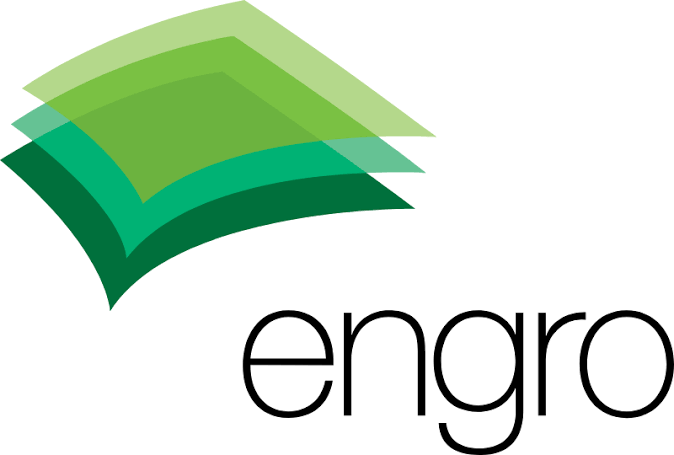 2024-2025 / 5.0
2024-2025 / 5.0
Award from Engro
This award is presented by Engro regional sales manager (RSM) to Ahmad Traders on top selling of Engro products.
Malik Muhammad Ahmad, Co-founder
 2024-2025 / 5.0
2024-2025 / 5.0
Award From Fatima Fertilizer Ltd.
This award is presented by Fatima Fert to Ahmad Traders on top selling of products all around in Pakistan according to company rules regulations & policies. Ahmad traders
Malik Muhammad Ahmad, Co-founder
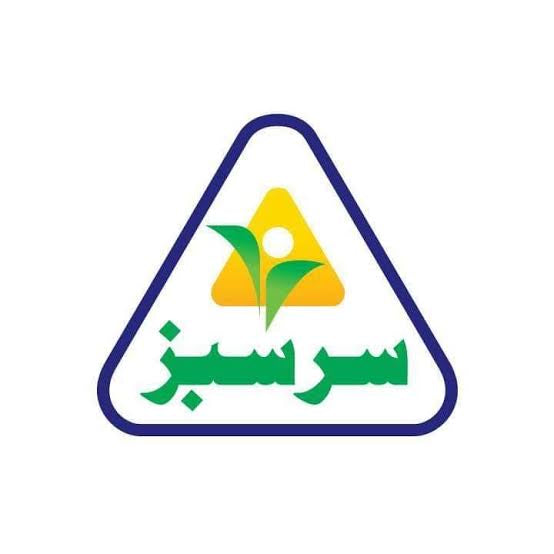 2023-2024 / 5.0
2023-2024 / 5.0
Sarsabz Royal Award
Sarsabz Royal Award presented by Sarsabz to MSKD on Remarkable Sales across in Pakistan.
Malik Muhammad Ahmad, Co-founder
LCCI
LAHORE CHAMBER OF COMMERCE AND INDUSTRY
Group of gulzar & sons also link with LCCI to promote international business relations
READ MORE
Dealerships under (GGS)
 5.0/5.0 / 5.0
5.0/5.0 / 5.0
Dealership of Ahmad traders (FFC/FFBL)
Ahmad traders starts work with FFC & FFBL in 2016. This Dealership given by Shahzad Anwar Butt sales Executive of FFC & FFBL
Malik Muhammad Ahmad, Co-founder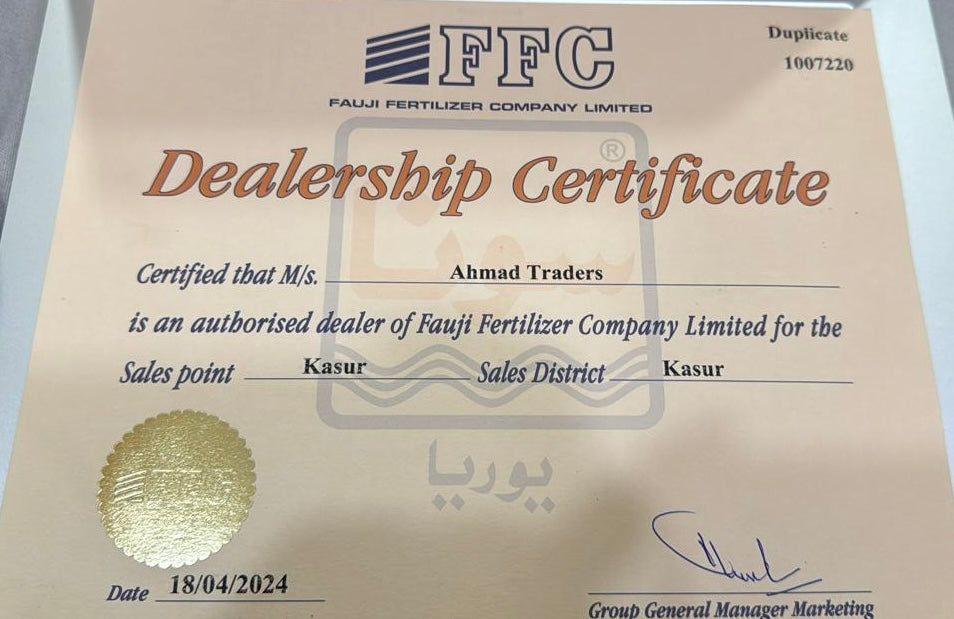
 5.0/5.0 / 5.0
5.0/5.0 / 5.0
Dealership of Fatima Fertilizers Company Ltd
Muhammad sajjad starts work with Fatima Fertilizers Company Ltd in 2001.
Malik Muhammad Ahmad, Co-founder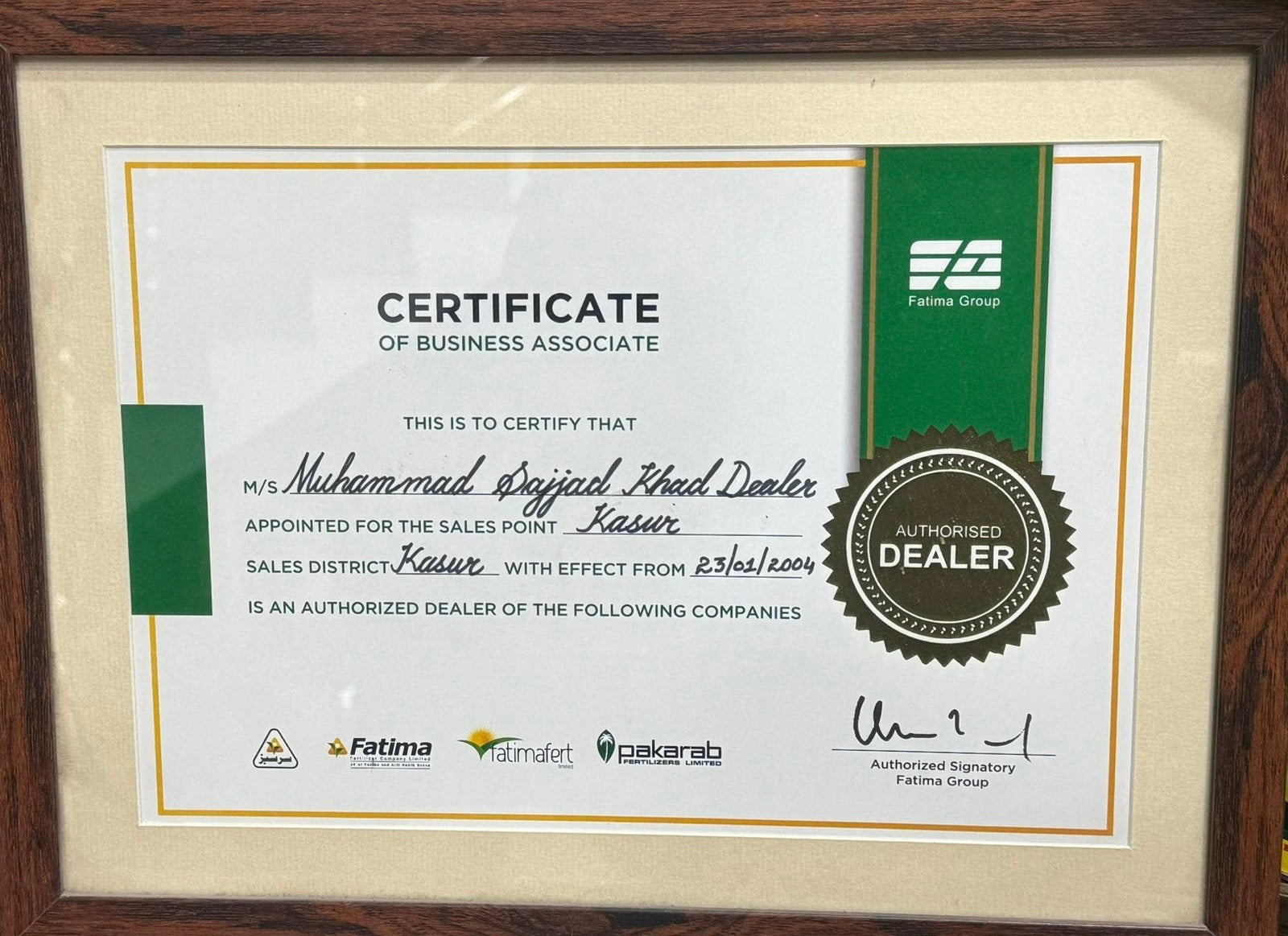
 5.0/5.0 / 5.0
5.0/5.0 / 5.0
Dealership of Fatima Fertilizers Company Ltd
Ahmad traders starts work with Fatima Fertilizers Company Ltd in 2017.
Malik Muhammad Ahmad, Co-founder
GGS CLOUD ERP.
SALES NETWORK GROUP OF GULZAR & SONS
Successfully engaged with more than 1000 customers all around the Pakistan in tradingSector.At Group of Gulzar, we are committed to serving farmers, dealers, distributors, and business partners with reliability, innovation, and trust. Our strong nationwide network ensures that our products and services are accessible across all four provinces of Pakistan.
READ MORE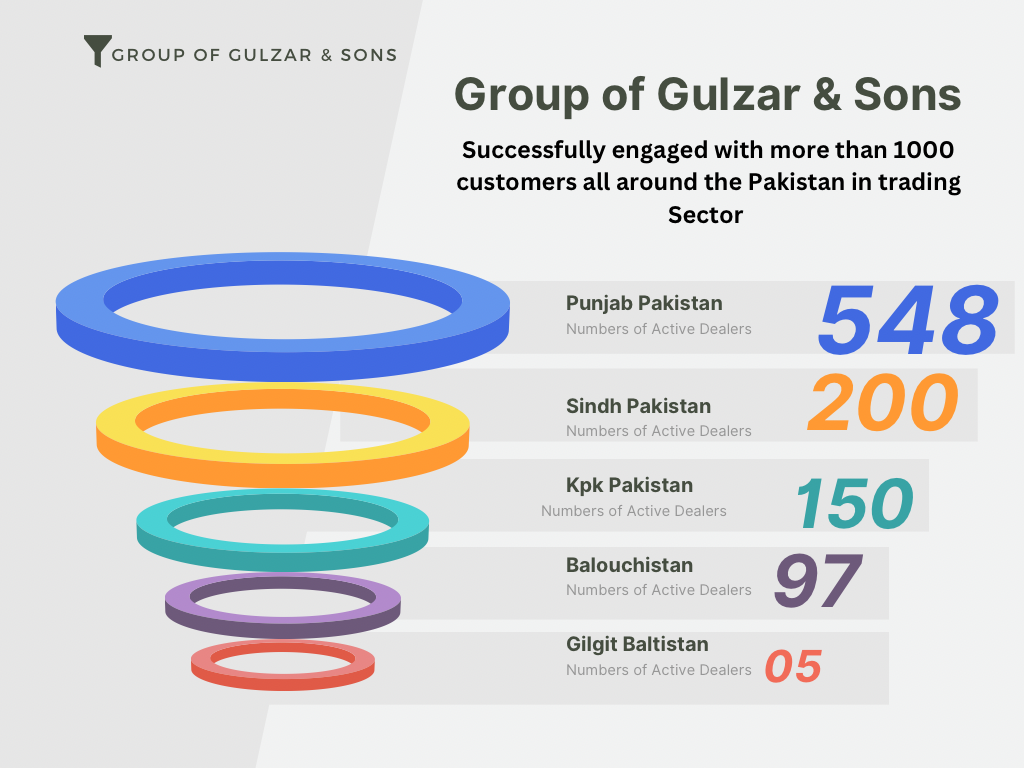
Long Business Relations(GGS)
 5.0/5.0 / 5.0
5.0/5.0 / 5.0
Sarsabz Loyalty Program 2021
Presented to Malik Muhammad Sajjad
Malik Muhammad Ahmad, Co-founder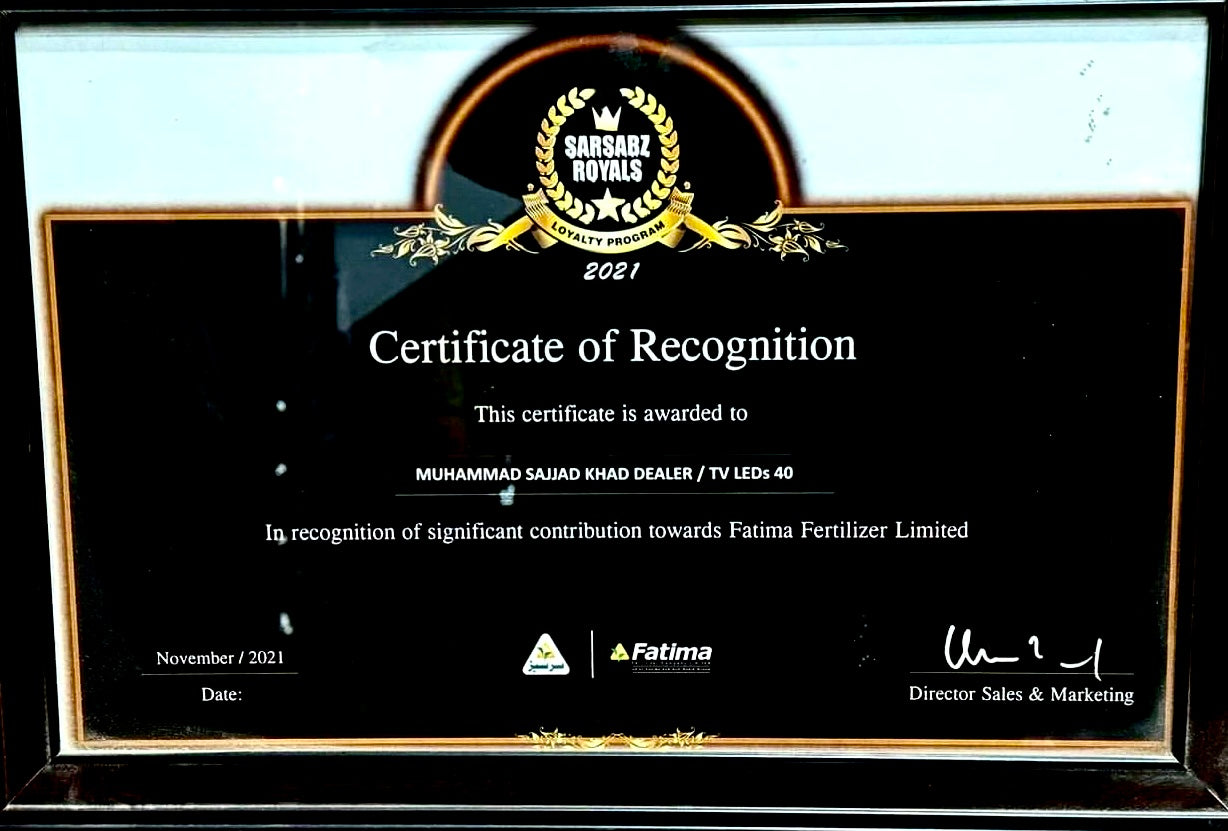
 5.0/5.05 / 5.0
5.0/5.05 / 5.0
Sarsabz Loyalty Program 2022
Presented to Malik Muhammad Sajjad
Malik Muhammad Ahmad, Co-founder
 5.0/5.0 / 5.0
5.0/5.0 / 5.0
Long Association award
Presented to Malik Muhammad Sajjad on 15 year long Association. 2005-2020
Malik Muhammad Ahmad, Co-founder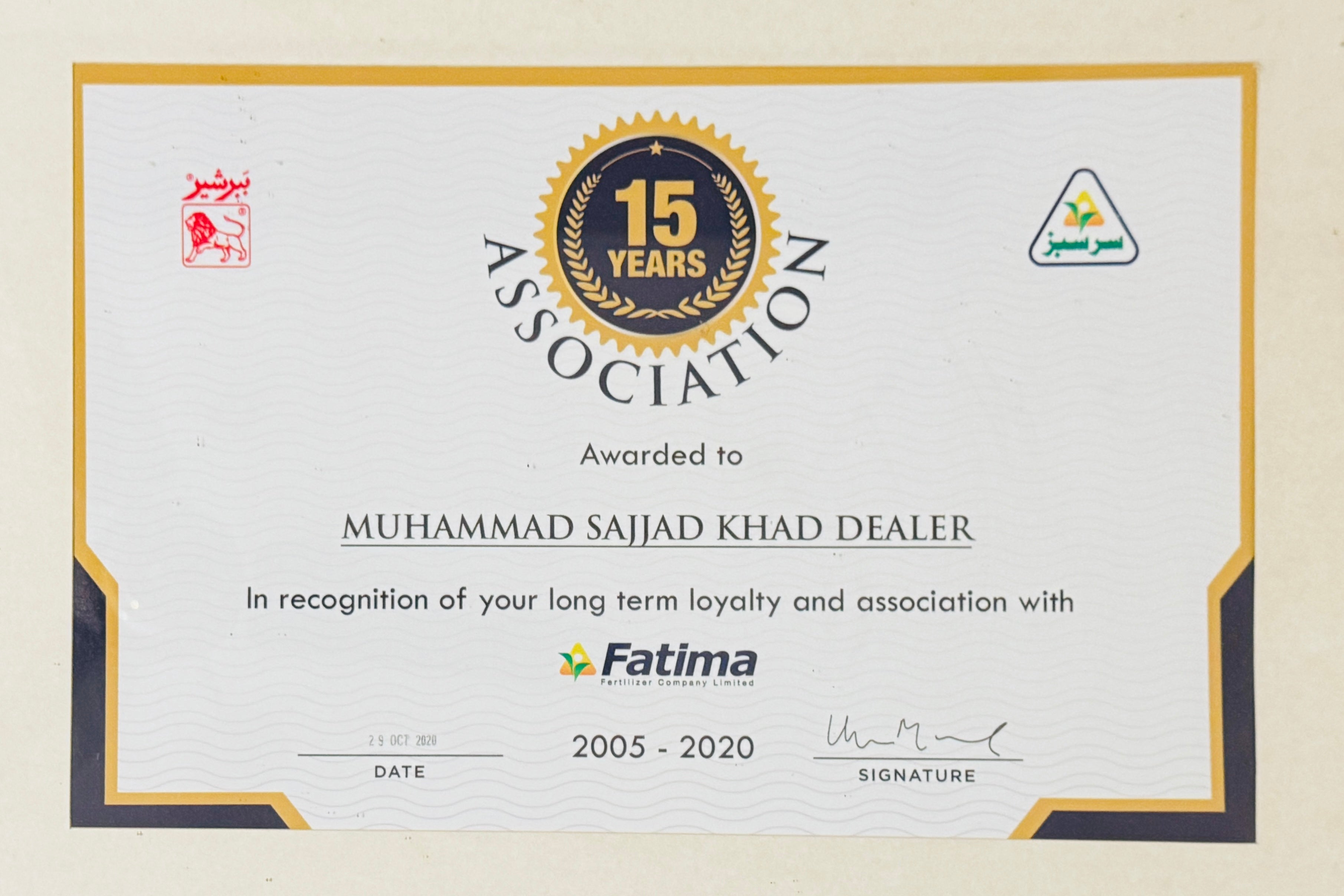
GGS CLOUD ERP.
SEED ASSOCIATION OF PAKISTAN SAP
We feel proud to have a membership of seed Association of Pakistan, which is very helpful for us to deal with legal matters in seeds sector.Seed association of Pakistan is also introduce their membership holder to the new era of technology of farming.
READ MORE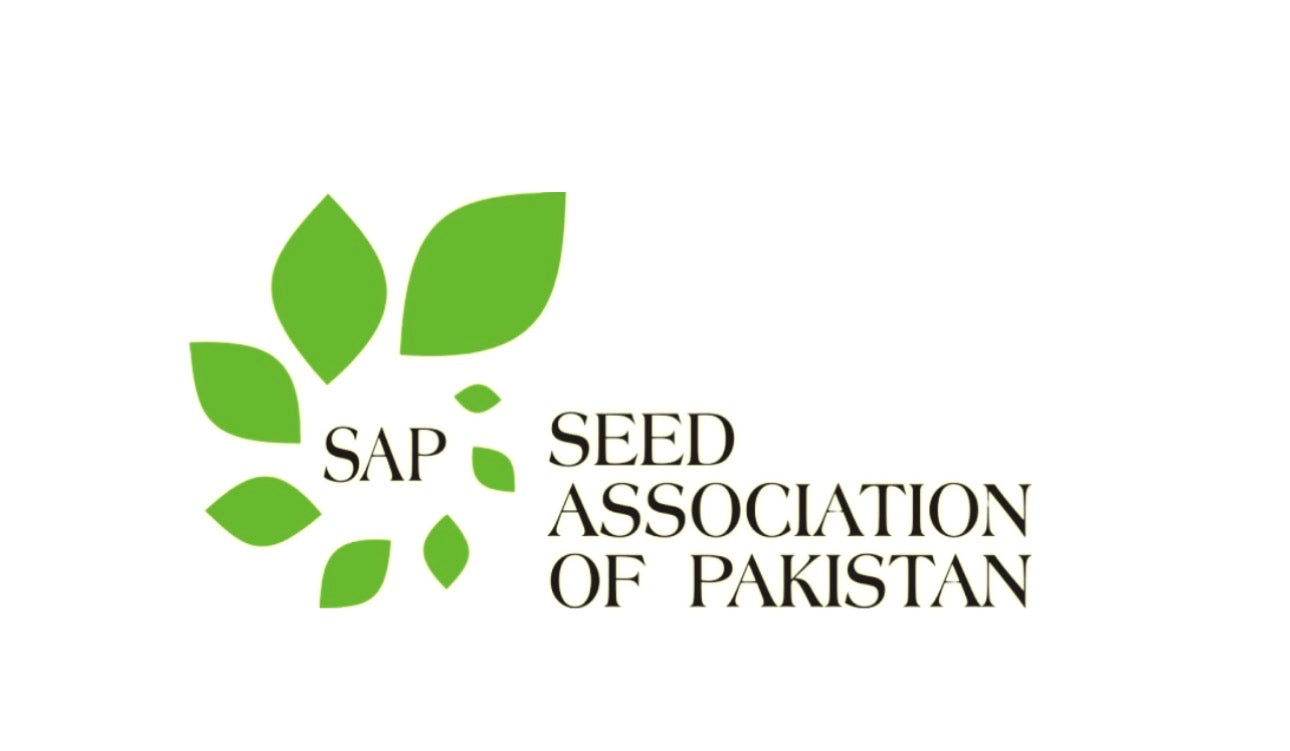
GGS
OUR BLOG
BLOGS BY GROUP OF GULZAR & SONS.
HBL & ZTBL
AUTHOR: Group
DATE: 24 Mar 2025
SAVE EARTH WITH GGS
Saving Earth requires collective efforts from individuals, communities, governments, organizations, and industries to address environmental challenges. Here are key actions to take: Reduce Carbon Footprint: Use renewable energy sources like solar and wind. Drive less, use public transport, or switch to electric vehicles. Conserve energy by using energy-efficient appliances. Conserve Water: Fix leaks and use water-efficient fixtures. Reduce water waste by limiting use in daily activities. Reduce, Reuse, Recycle: Minimize waste by choosing products with less packaging and recycling materials. Reuse items instead of discarding them. Protect Ecosystems and Biodiversity: Plant trees and restore natural habitats. Support conservation efforts to protect endangered species. Adopt Sustainable Practices: Support eco-friendly businesses and products. Practice sustainable agriculture and eating habits, such as consuming less meat. Support Environmental Policies: Advocate for strong environmental regulations. Vote for leaders who prioritize climate action and sustainability. Education and Awareness: Spread awareness about environmental issues. Encourage others to take sustainable actions. Every small step counts in building a more sustainable future for the planet.
AUTHOR: MUHAMMAD
DATE: 15 Jan 2025
4 WAYS OF NATURAL REFORESTATION
Natural reforestation, also known as natural regeneration, is the process where forests regenerate naturally through the natural growth of trees from seeds, sprouts, or seedlings without the need for human intervention such as planting. It plays an essential role in environmental sustainability and offers several significant benefits. Here's why natural reforestation is important: 1. Environmental Benefits: Biodiversity Conservation: Natural reforestation helps restore ecosystems and provides habitats for a variety of species, improving biodiversity. Unlike monoculture plantations, natural regeneration allows a diverse mix of plant and animal species to thrive. Carbon Sequestration: Forests act as carbon sinks, absorbing carbon dioxide (CO₂) from the atmosphere. Natural reforestation contributes to the reduction of greenhouse gases, helping combat climate change. Soil Protection: Forests prevent soil erosion by stabilizing the soil with their root systems, reducing the risk of landslides, especially in hilly or mountainous regions. Water Regulation: Healthy forests regulate water cycles by maintaining groundwater levels and reducing the risk of flooding. Forests act as natural sponges, capturing and slowly releasing water into rivers and streams. Air Quality Improvement: Trees in regenerating forests filter pollutants from the air and release oxygen, improving air quality and promoting overall public health. 2. Cost-Effectiveness: Lower Costs: Unlike tree planting, which involves significant human effort, resources, and costs, natural reforestation requires minimal intervention. By allowing nature to take its course, the process is more cost-effective in the long run. Self-sustaining Process: Once natural reforestation is underway, it becomes a self-sustaining process that does not require continuous maintenance or external inputs (e.g., water, fertilizers, or pesticides). 3. Faster Recovery of Ecosystems: Accelerated Regrowth: In many cases, natural reforestation leads to faster ecosystem recovery compared to artificial reforestation or tree planting. The process can begin more quickly as existing plants, seeds, and natural processes start to regenerate the forest. Resilience: Forests regenerated naturally are often more resilient to pests, diseases, and environmental stresses because they maintain greater biodiversity and ecological balance. 4. Improved Climate Adaptation: Enhanced Ecosystem Services: Natural reforestation supports ecological processes such as nutrient cycling, water filtration, and pest control, which strengthen ecosystems' resilience to climate change. Adaptability to Local Conditions: Since natural reforestation relies on the area's native species and ecological conditions, the resulting forests are better adapted to local climates and environmental challenges. 5. Cultural and Community Benefits: Community Engagement: In many regions, natural reforestation allows local communities to engage in forest management and stewardship. This fosters a sense of ownership and responsibility, leading to more sustainable practices. Livelihoods: Regenerating forests provide opportunities for sustainable forest management practices, which can be linked to the collection of non-timber forest products, ecotourism, and sustainable harvesting of wood resources. 6. Long-Term Sustainability: Sustainable Forest Growth: Natural reforestation creates forests that are more diverse and complex, often ensuring a sustainable supply of timber, fuelwood, and other resources for local populations over the long term. Reduced Need for External Inputs: Since natural regeneration uses the existing seed bank, soil, and other ecological processes, it generally requires fewer external inputs and labor compared to artificial planting. Challenges of Natural Reforestation: While natural reforestation has many benefits, there are some challenges to consider: Invasive Species: Non-native plants or pests can hinder natural regeneration, making it difficult for native species to reestablish themselves. Land Use and Human Activity: If the land is heavily impacted by agriculture, urbanization, or other forms of land use, natural reforestation may be slow or may require interventions like removing invasive species or protecting the area from further disturbances. Climate Change: Changes in temperature, rainfall patterns, and extreme weather events may affect the success and speed of natural reforestation in some regions. Conclusion: Natural reforestation is a sustainable and effective approach to forest restoration that offers a range of environmental, economic, and social benefits. By allowing ecosystems to regenerate naturally, it contributes to biodiversity conservation, climate change mitigation, and the restoration of critical ecosystem services. However, successful natural reforestation requires protection from external threats such as invasive species and human encroachment.
AUTHOR: MUHAMMAD
DATE: 15 Jan 2025
GROUP OF GULZAR & SONS (GO GREEN LIVE GREEN INITIATIVE
Recycling, particularly plastic recycling, offers numerous environmental, economic, and social benefits. Here's a breakdown of the key advantages: Environmental Benefits: Reduces Waste: Recycling plastic helps divert waste from landfills and incinerators, minimizing pollution and reducing landfill usage. Conserves Resources: By reusing materials, recycling reduces the need for new raw materials, such as petroleum, which is used in plastic production. Reduces Pollution: Plastic production and disposal contribute to air, water, and soil pollution. Recycling reduces harmful emissions and waste. Reduces Energy Consumption: Producing new plastic requires more energy than recycling existing plastic. This means that plastic recycling helps lower energy consumption, reducing greenhouse gas emissions. Prevents Ocean Pollution: By properly recycling plastics, less plastic waste ends up in oceans, where it can harm marine life and ecosystems. Economic Benefits: Job Creation: The recycling industry generates employment opportunities in collection, sorting, processing, and selling recycled materials. Supports a Circular Economy: Recycling contributes to a circular economy, where materials are reused and repurposed, leading to sustainable growth and reducing the need for new resources. Reduces Manufacturing Costs: Recycled plastics are often cheaper to process than new plastics, leading to lower manufacturing costs for businesses. Encourages Innovation: Recycling stimulates innovation in waste management, materials science, and sustainable manufacturing practices. Social Benefits: Raises Environmental Awareness: Recycling encourages individuals and businesses to think about their consumption and waste patterns, fostering environmental responsibility. Promotes Sustainable Practices: By adopting recycling, communities contribute to sustainability efforts that benefit future generations and the planet. Improves Public Health: Reduced plastic pollution leads to cleaner air, water, and land, which can have a positive impact on public health and well-being. Key Challenges of Plastic Recycling: Contamination: Non-recyclable plastics or food residue can contaminate recycling streams, making it harder to process materials. Limited Recycling Options: Some types of plastic, such as single-use plastics, may be difficult or economically unfeasible to recycle. In summary, plastic recycling helps conserve resources, protect the environment, and support economic growth while creating a cleaner and healthier world for future generations.
AUTHOR: MUHAMMAD
DATE: 15 Jan 2025
GGS CLOUD ERP.
ALL PAKISTAN FERTILIZER DEALER ASSOCIATION. APFDA
All Pakistan fertilizer dealer association is the well known association that always helps fertilizer dealers, Traders & distributors in any kind of dispute between government sector & fertilizer companies.We feel so proud to have membership in all Pakistan fertilizer dealer Association.
READ MORE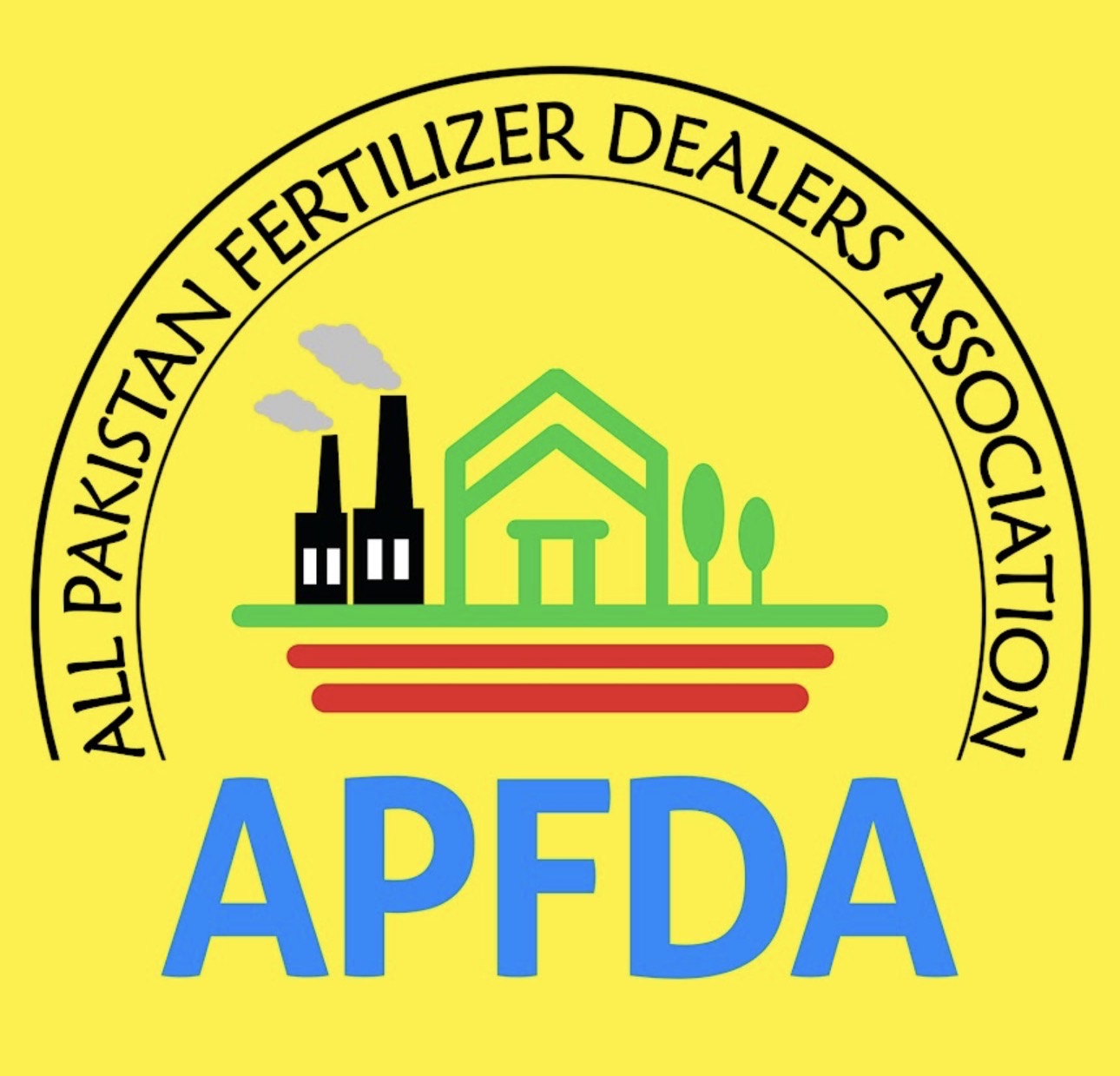
(GGS)NEW BLOGS
GET LATEST NEWS REGARDING BUSINESS SECTORS
HIGH TECH MECHANICS BY CM PUNJAB
AUTHOR: Group
DATE: 20 Jan 2025
SOLAR POWER BY CM PUNJAB
AUTHOR: Group
DATE: 20 Jan 2025
GREEN TRACTORS BY CM PUNJAB.
AUTHOR: Group
DATE: 20 Jan 2025
Digital Kissan Karobar Scheme (DKKS)
Digital marketing is one of the popular concepts and methodologies used in today’s business world. Digital marketing also called online marketing, is the promotion of brands to connect with potential customers using the Internet and other forms of digital communication. The literacy rate of Gilgit-Baltistan is considerably high than other parts of the country and after the inception of 4G services across Gilgit-Baltistan, the tendency for the usage of internet services have been increased manifold. On the other hand, world top class fruits like cherry, almond, apricot, pine net, pear, etc are widely produced and the wastage ratio is more than 30% due to the non-availability of an adequate marketplace. Therefore, to capture this opportunity and provide business and employment opportunities in far-flung villages of Gilgit-Baltistan by marketing their fresh/dry fruits by establishing virtual online shops, a financing product with the title of “Digital Kissan Karobar Scheme (DKKS)” has been introduced. Terms & Conditions: Operational Jurisdiction The scheme will be applicable in all branches falling under ZTBL Gilgit-Baltistan Zone. Eligibility Criteria The creditworthy and reputable rural farmer with appropriate self-owned & self-possessed agri. land to cover the feasibility of the subject project is entitled to avail of the loan facility. An individual should be a resident of Gilgit-Baltistan and intends to increase their income through digital marketing/sale of their fresh/dry fruits by establishing a virtual/online Fruit Shop. Individuals should be within the age limit of 18-60 years. A Valid copy of CNIC. Clear e-CIB report from SBP. Obligors Risk Rating (ORR) up to 4. Maximum Loan Limit The maximum loan limit under the scheme would be up to Rs. 2.500 million per borrower/party. Borrower’s Contribution 10% of the loan amount will be deposited by the borrower as self-contribution or invested towards the project. Collateral The loan would be secured against all types of tangible securities acceptable to the Bank. In case of its non-availability, the parent’s/family member’s security can be accepted as a co-applicant. Cost of Credit As per Bank’s Rules. Rate of Mark up The prevailing rate of markup on development loans would be applicable. However, a 3% rebate would be allowed on timely repayment. Sanction of Loan Loans under the scheme would be sanctioned by Central Loans Sanctioning Department (CLSD). Disbursement After execution of legal documents loan would be disbursed through the deposit account of the borrower. Repayment Schedule The loan would be recovered within 5 years in half-yearly installments with a grace period of six (06) months. Monitoring Close monitoring would be carried out by the respective MCO & Branch Manager.
AUTHOR: Group
DATE: 20 Jan 2025
SCHEMES BY ZTBL.
AUTHOR: Group
DATE: 20 Jan 2025
GGS CLOUD ERP
Pakistan Hi-Tech Hybrid Seed Association
Pakistan Hi-Tech Hybrid Seed Association has been formed as National Trade Body to pursue business friendly environment and regulatory framework for the R&D, growth and transfer of technology in the Sector to create the difference. All business concerns operating in the Sector are encouraged to join this platform and supplement the efforts for making Pakistan Seed Sector a symbol of economic growth.
READ MORE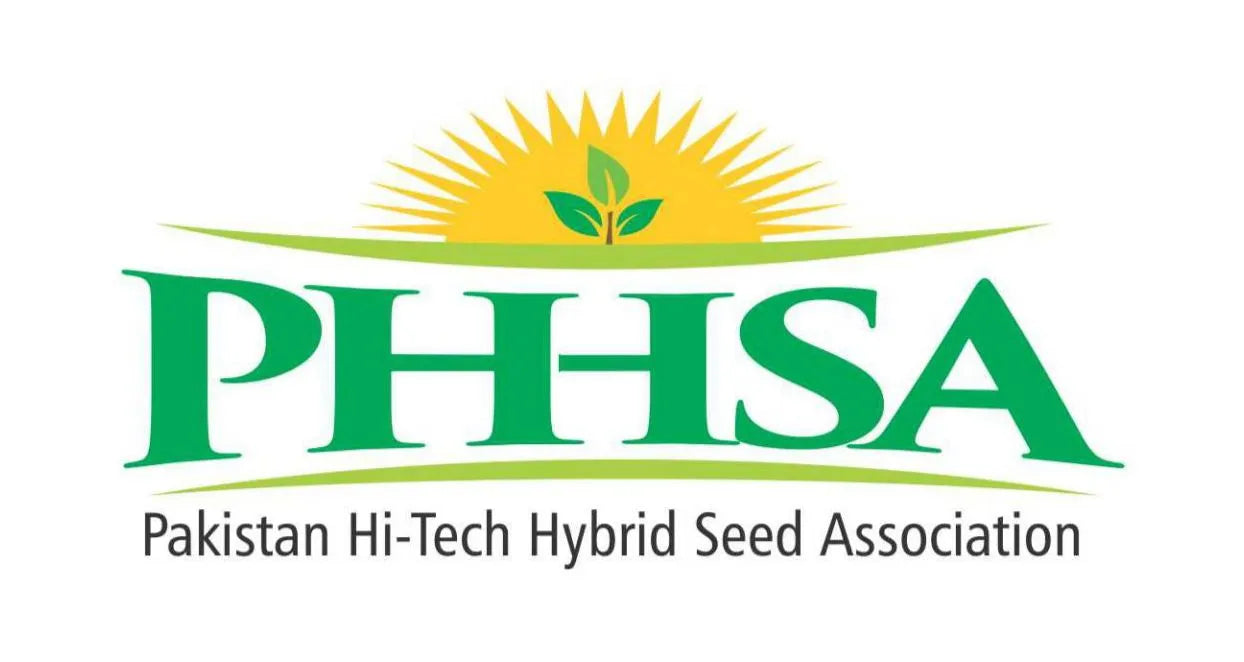
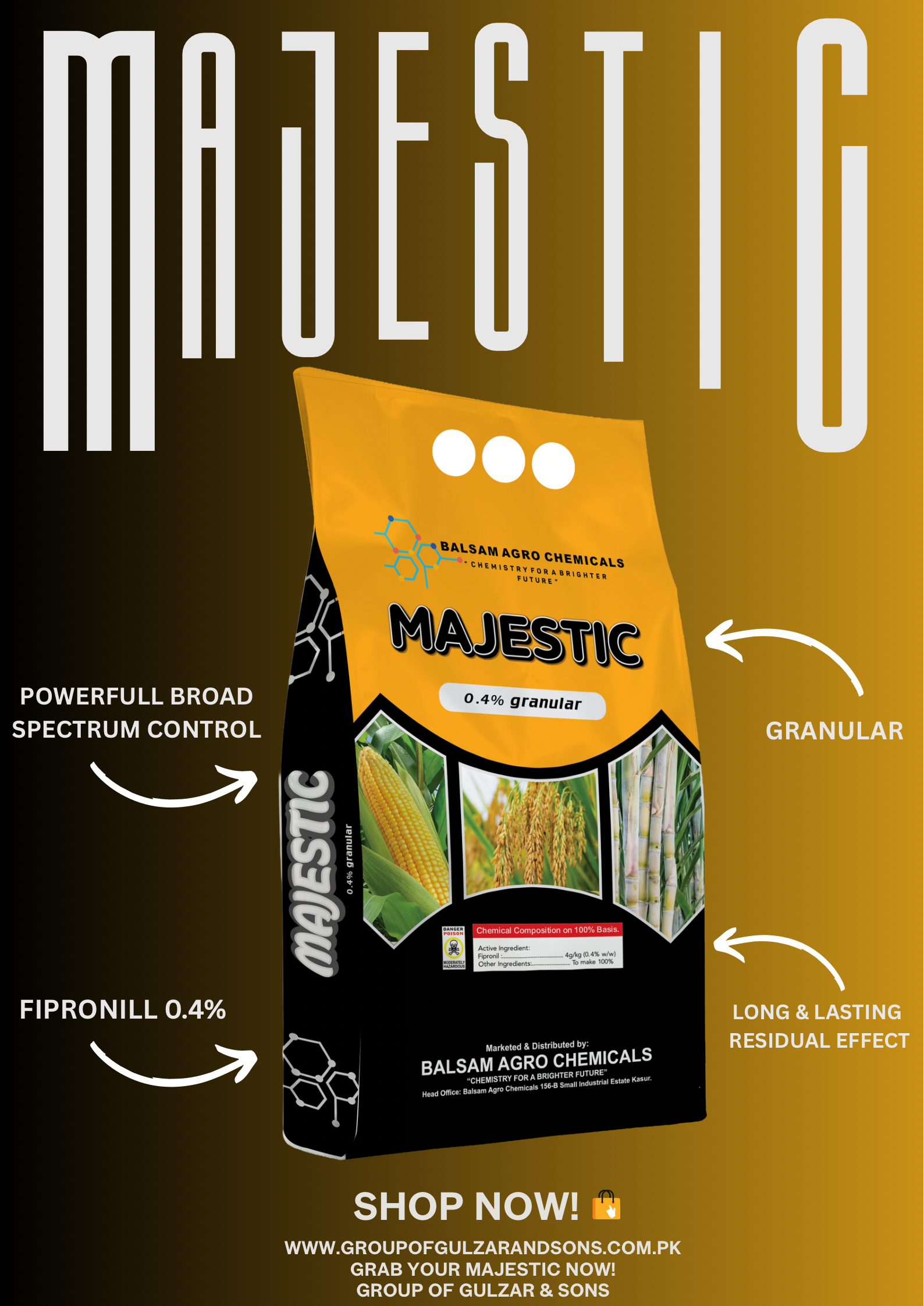
Newly Lunched Products
MAJESTIC BY BAC
🌿 Key Benefits of Majestic (Fipronil) by Balsam Agrochemicals1. Powerful Broad-Spectrum ControlMajestic (Fipronil) provides effective control against a wide range of harmful insects, including termites, thrips, stem borers, rootworms, and leaf miners. Its unique mode of action ensures both preventive and curative control, protecting crops from the most damaging pests.2. Long-Lasting Residual EffectOnce applied, Majestic remains active in the soil and on plant surfaces for an extended period, giving farmers long-lasting protection. This reduces the need for frequent sprays, saving both time and cost for growers.3. Systemic & Contact ActionFipronil works both by contact and ingestion. Insects that touch treated surfaces or feed on treated plants are quickly affected, leading to faster knockdown and reduced crop damage.4. Improves Crop Health & YieldBy controlling root and leaf-feeding insects, Majestic helps crops maintain strong root systems and healthier leaves. This promotes better nutrient uptake and results in higher yield and better-quality produce.5. Effective in Seed Treatment & Soil ApplicationMajestic can be used as a seed treatment, foliar spray, or soil application, making it highly versatile. When used in seed treatment, it protects emerging seedlings from early pest attacks, ensuring strong crop establishment.6. Rainfast & ReliableMajestic has strong binding properties that make it resistant to being washed away by rain or irrigation water, ensuring consistent pest protection even in varying weather conditions.7. Cost-Effective Pest ManagementDue to its long residual effect and wide spectrum control, fewer applications are needed compared to conventional insecticides. This makes Majestic a cost-efficient solution for farmers.
All products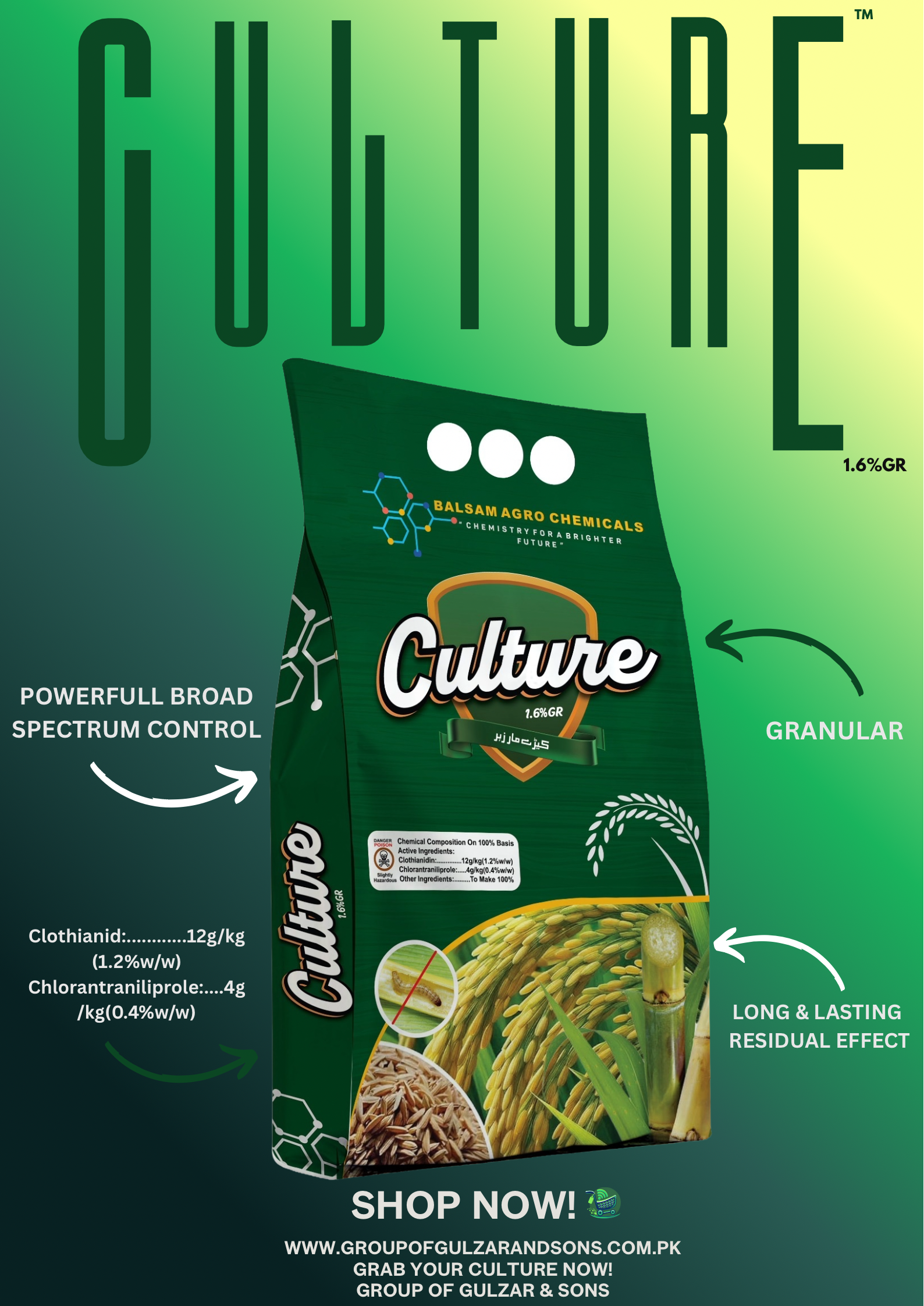
Newly Lunched Products
CULTURE
Product Name: CultureCompany Name: Balsam Agro ChemicalsComposition: • Clothianidin: 12 g/kg (1.2% w/w) • Chlorantraniliprole: 4 g/kg (0.4% w/w)🔑 Key Benefits of Culture 1. Dual Mode of Action • Combines Clothianidin (a systemic neonicotinoid) and Chlorantraniliprole (a diamide insecticide). • Provides broad-spectrum control by targeting insect nervous and muscular systems simultaneously. • Reduces the chances of insect resistance development. 2. Effective Seed Protection • Designed for seed treatment to protect crops during the early growth stage. • Shields emerging seedlings from sucking pests (aphids, jassids, whiteflies) and chewing pests (borers, cutworms, armyworms, leaf miners). 3. Long-Lasting Residual Effect • Offers extended protection after seed germination. • Minimizes the need for early foliar sprays, lowering input cost and labor. 4. Systemic & Translaminar Action • Clothianidin moves systemically through the plant, protecting roots, stems, and leaves. • Chlorantraniliprole works on muscle regulation of pests, providing fast knockdown and feeding inhibition. 5. Stronger Seedling Establishment • Ensures healthy and vigorous crop emergence by safeguarding against early pest pressure. • Results in better root development and uniform plant population. 6. High Yield Potential • By protecting crops in their most vulnerable stages, Culture helps maximize yield and crop quality. • Reduces early-stage crop stress, ensuring higher productivity. 7. Farmer-Friendly & Cost-Effective • Reduces repeated pesticide applications. • Saves time, money, and labor while ensuring reliable pest protection.
All products
GGS
NEW ARRIVALS ADVERTISEMENTS
Group of gulzar & sons new arrivals section






























































































































































































































































































































